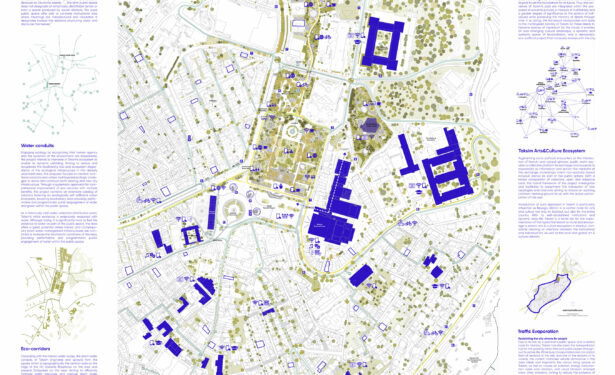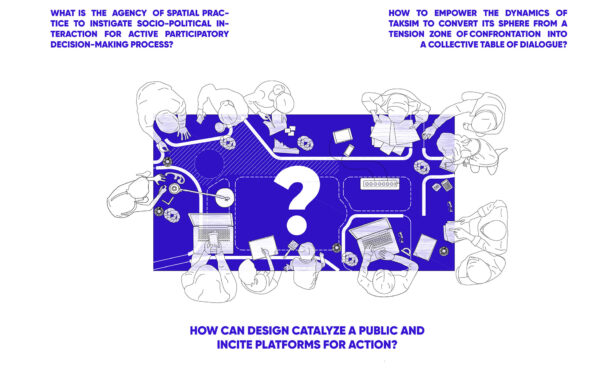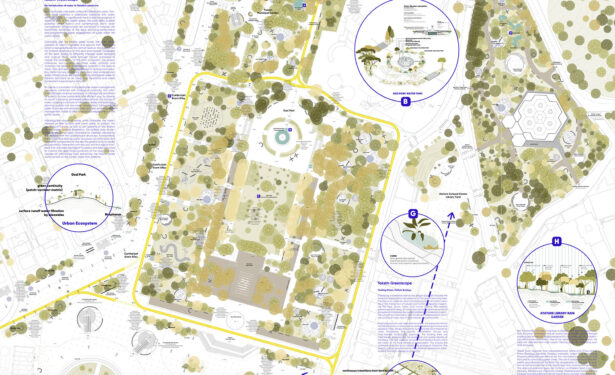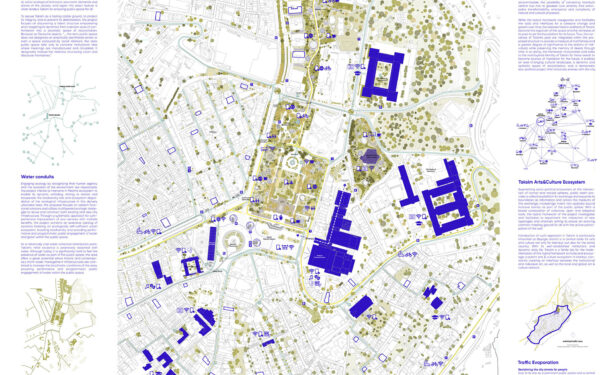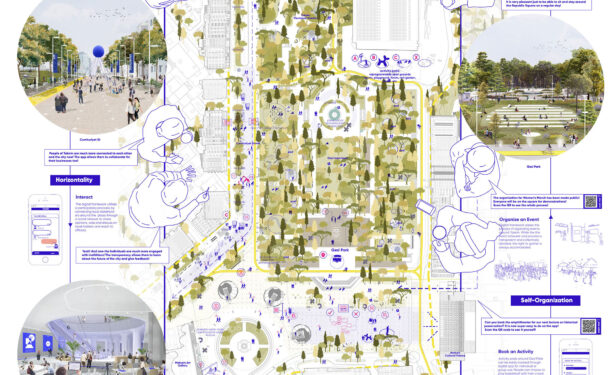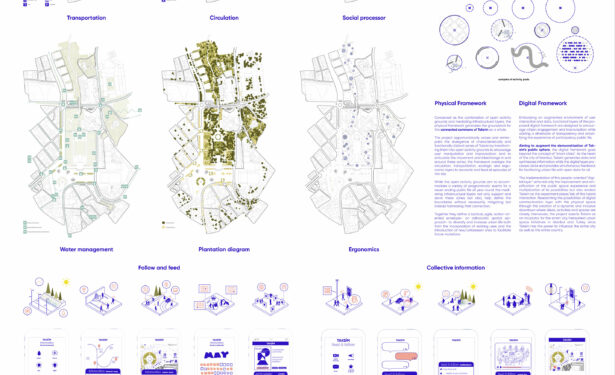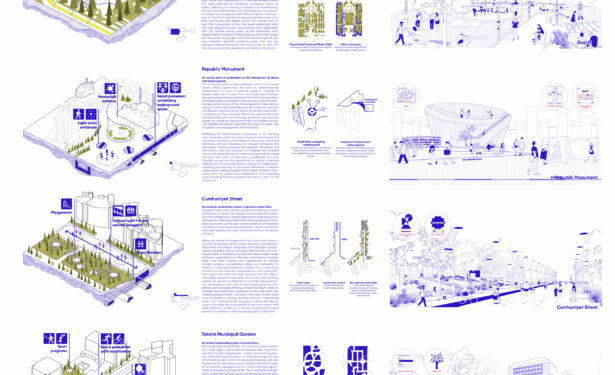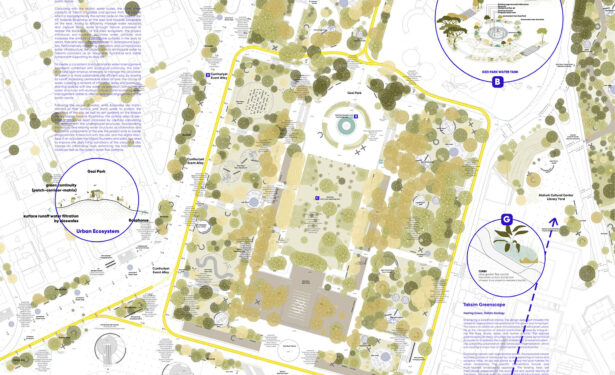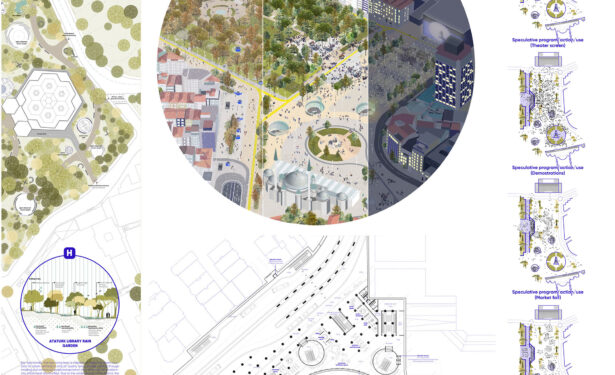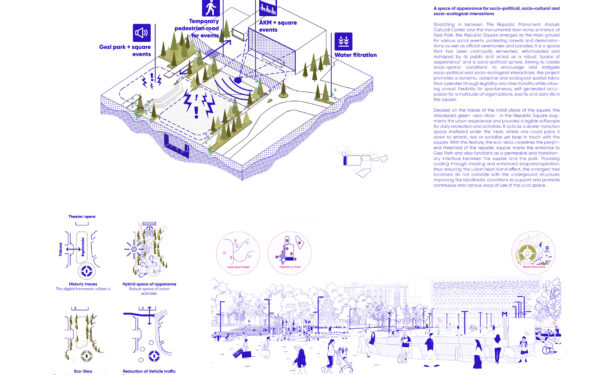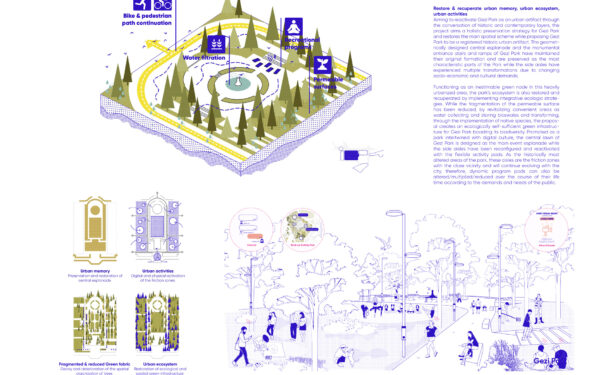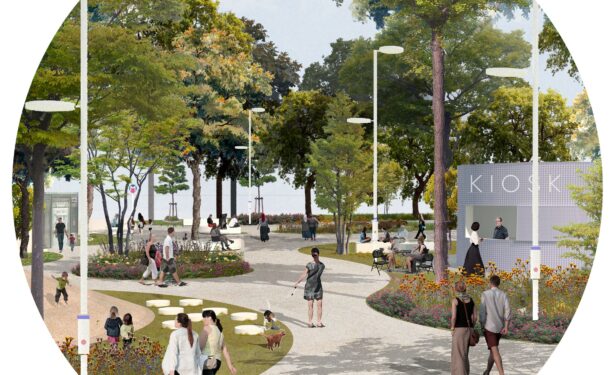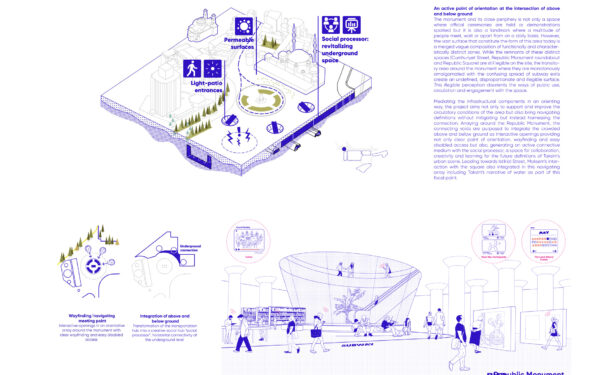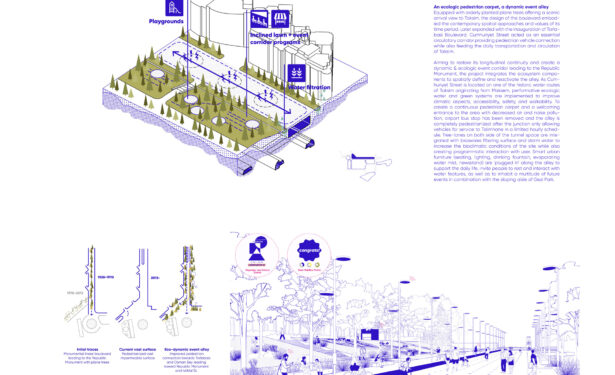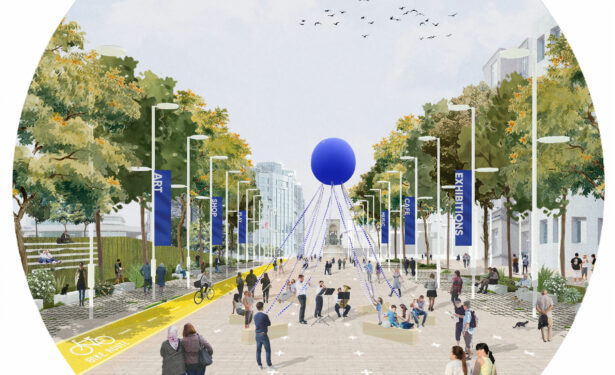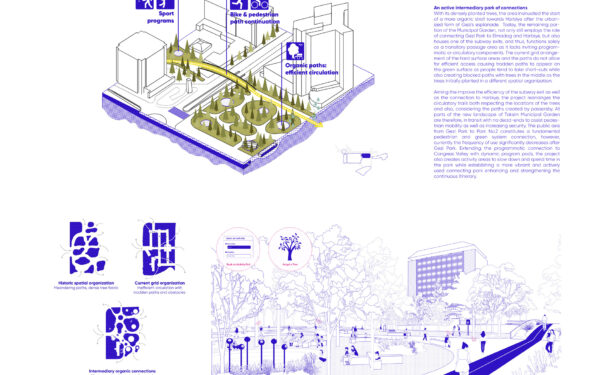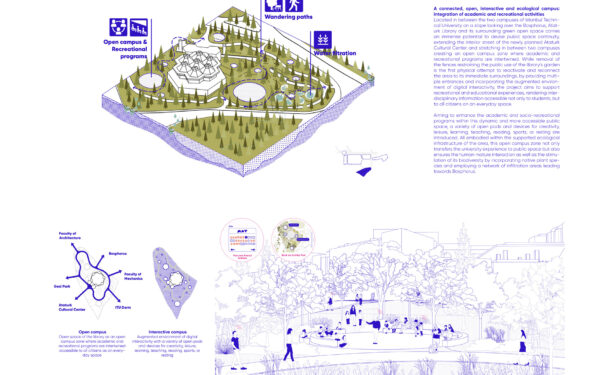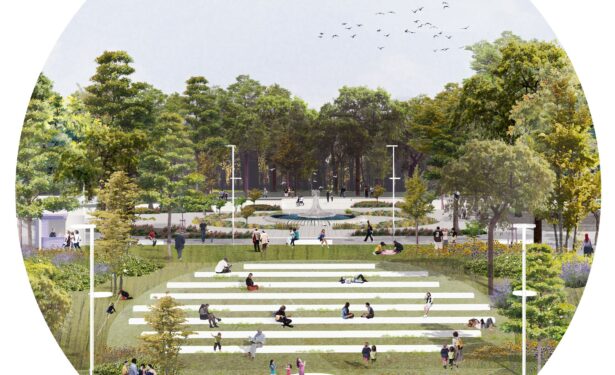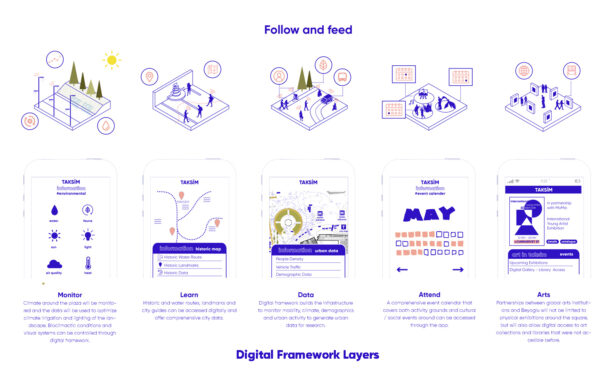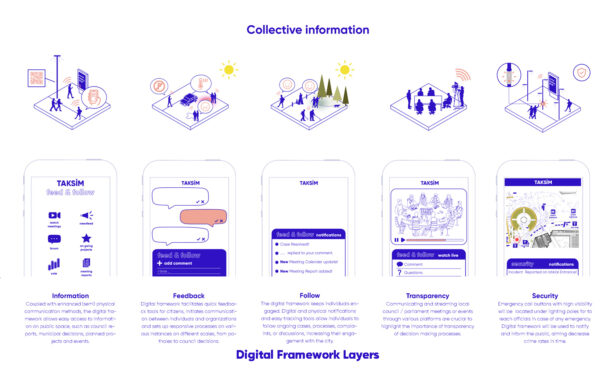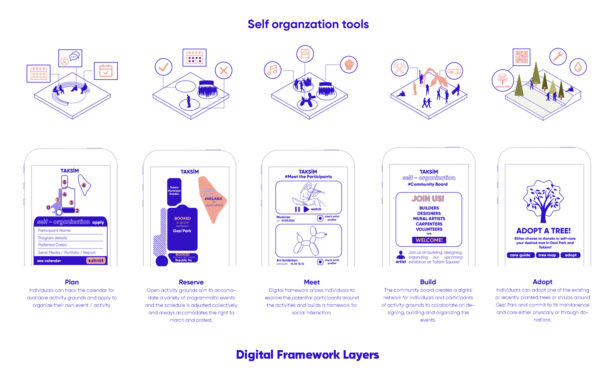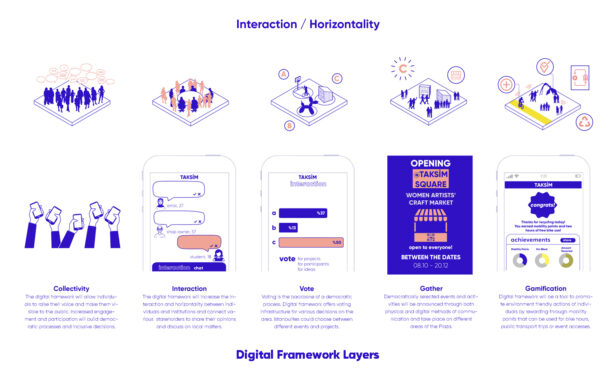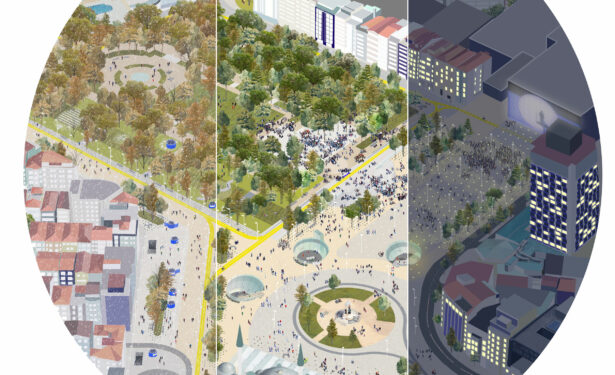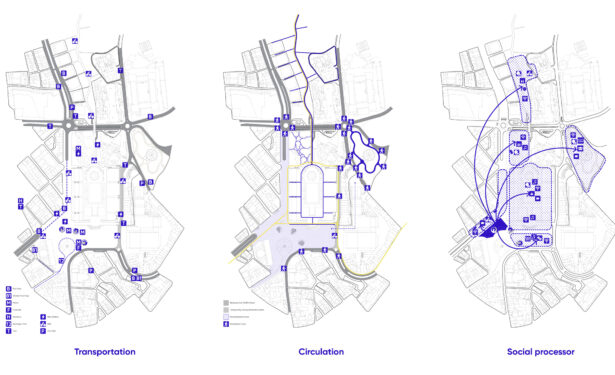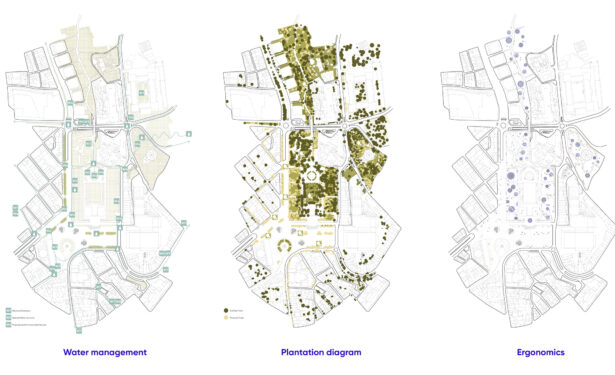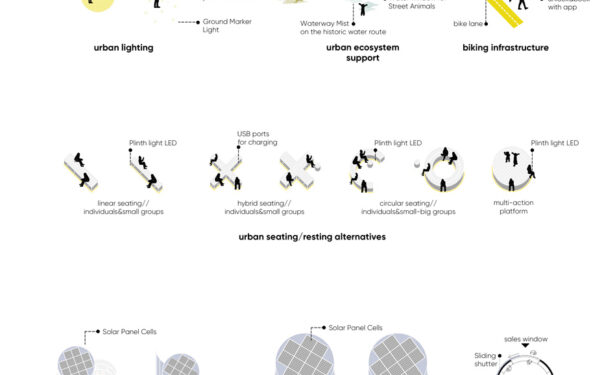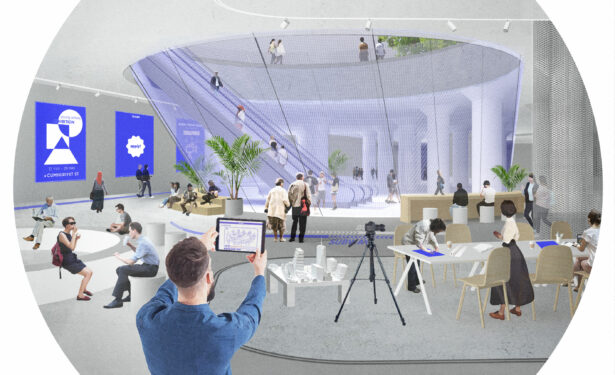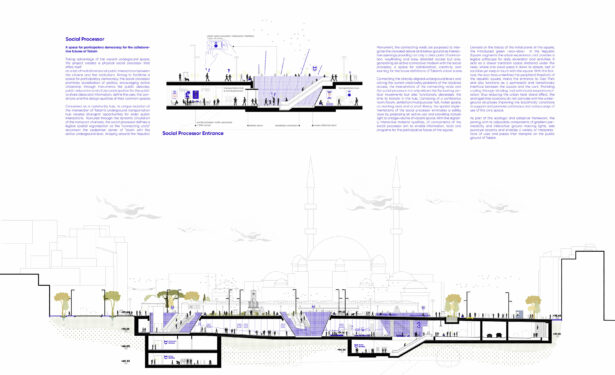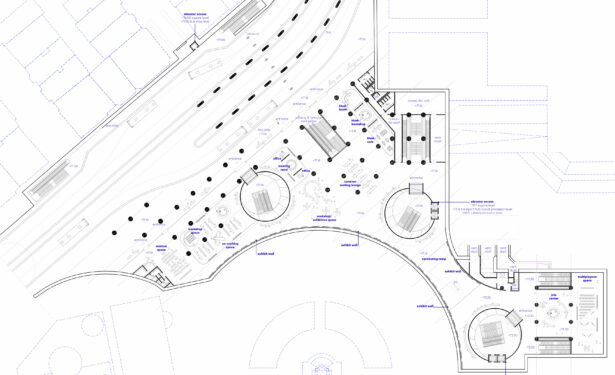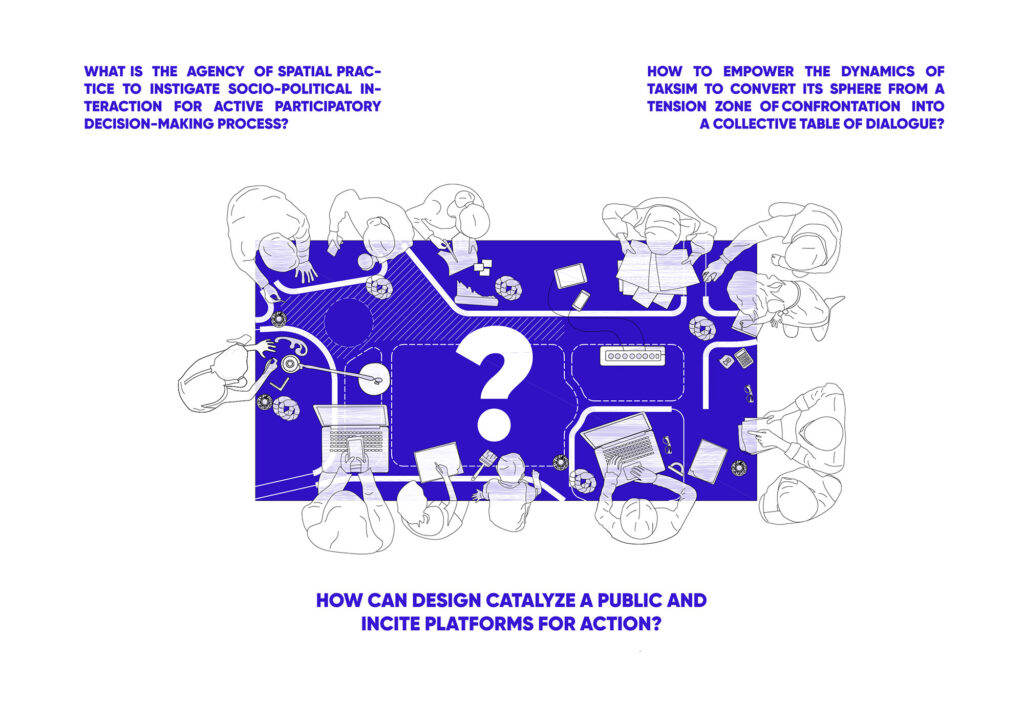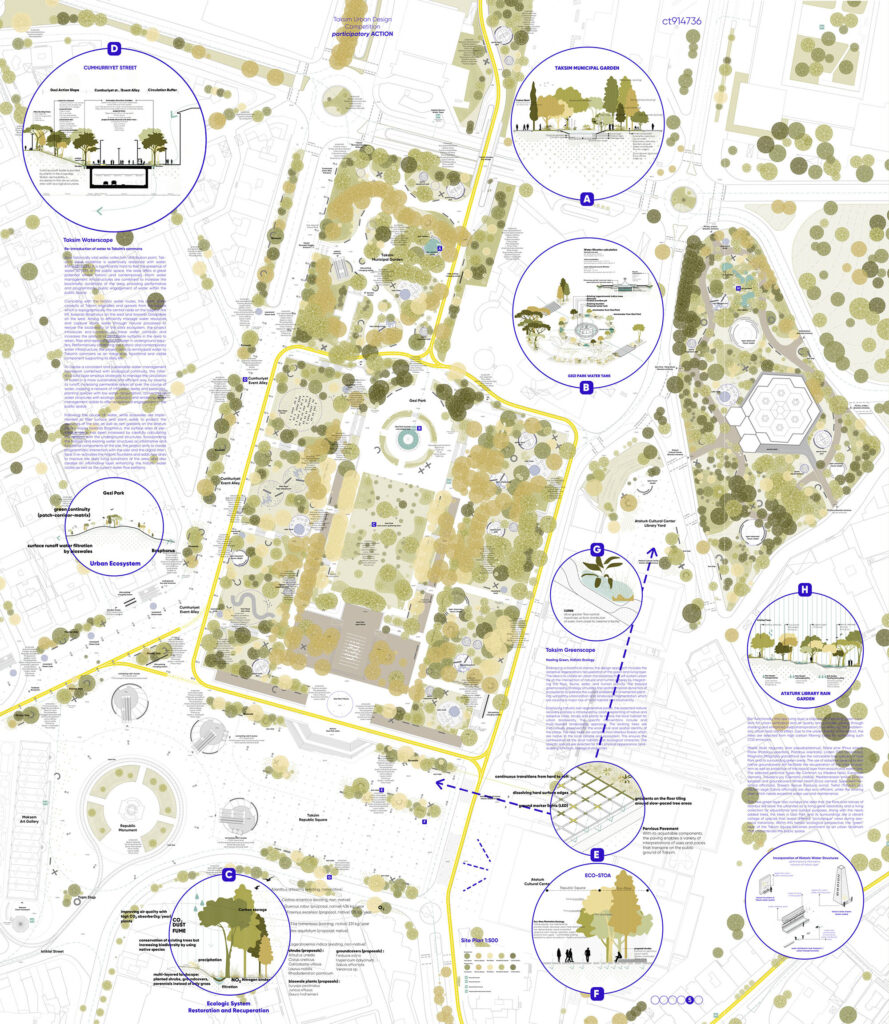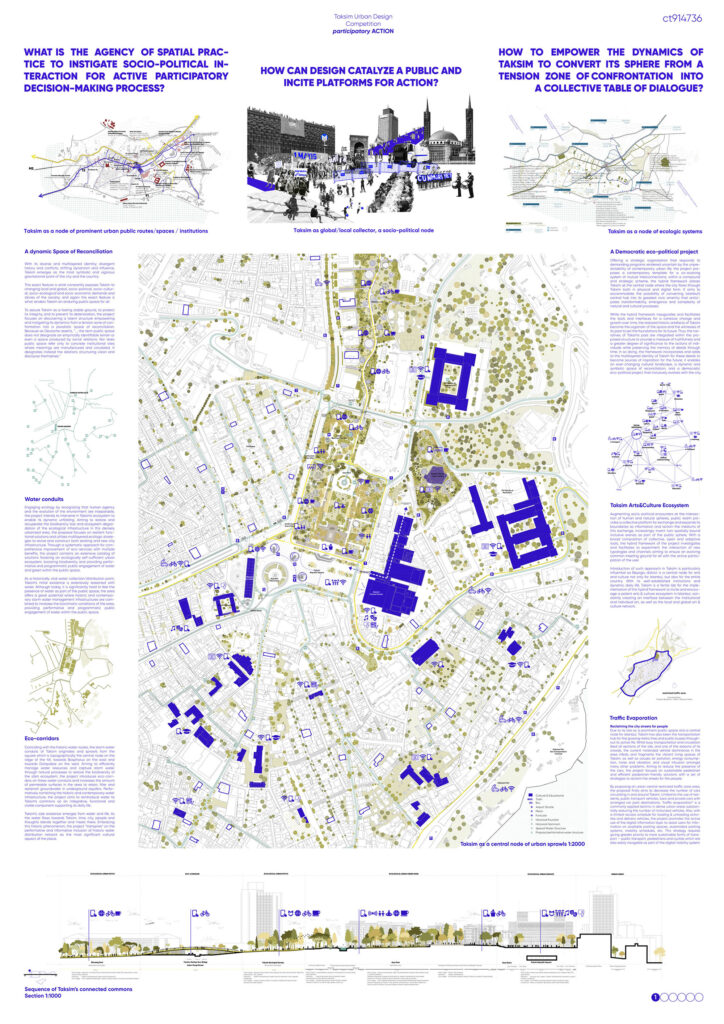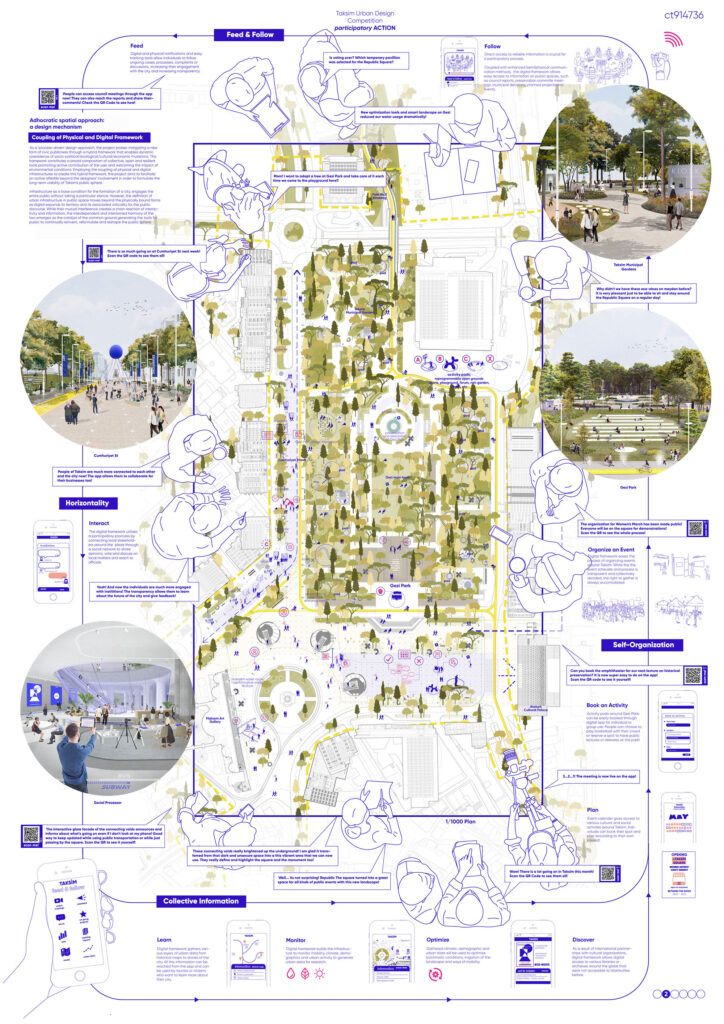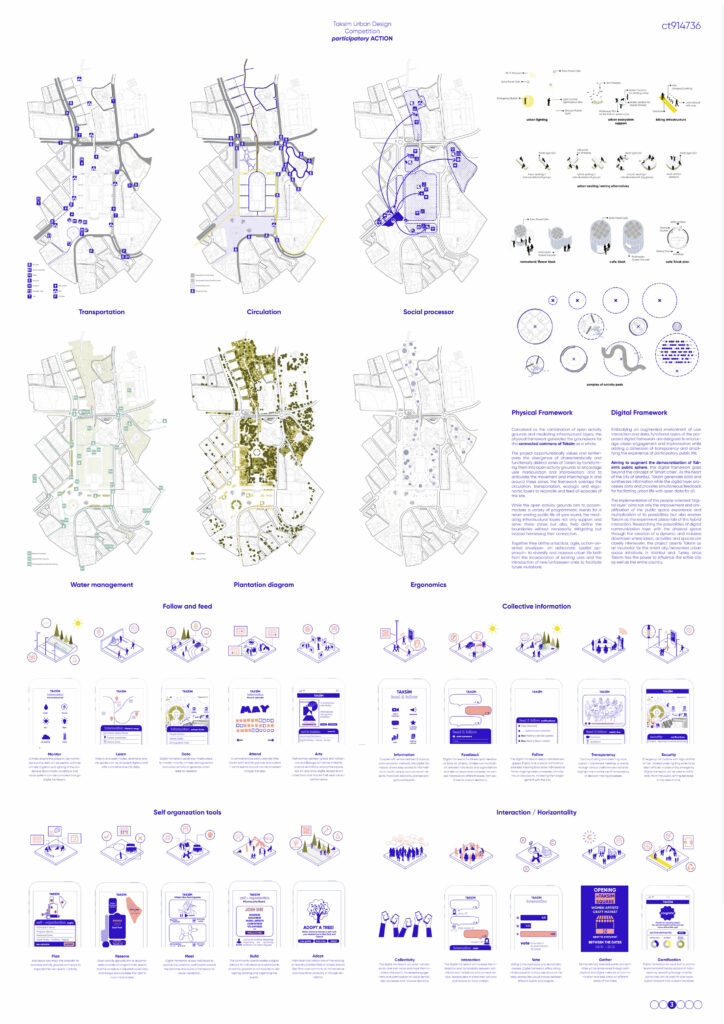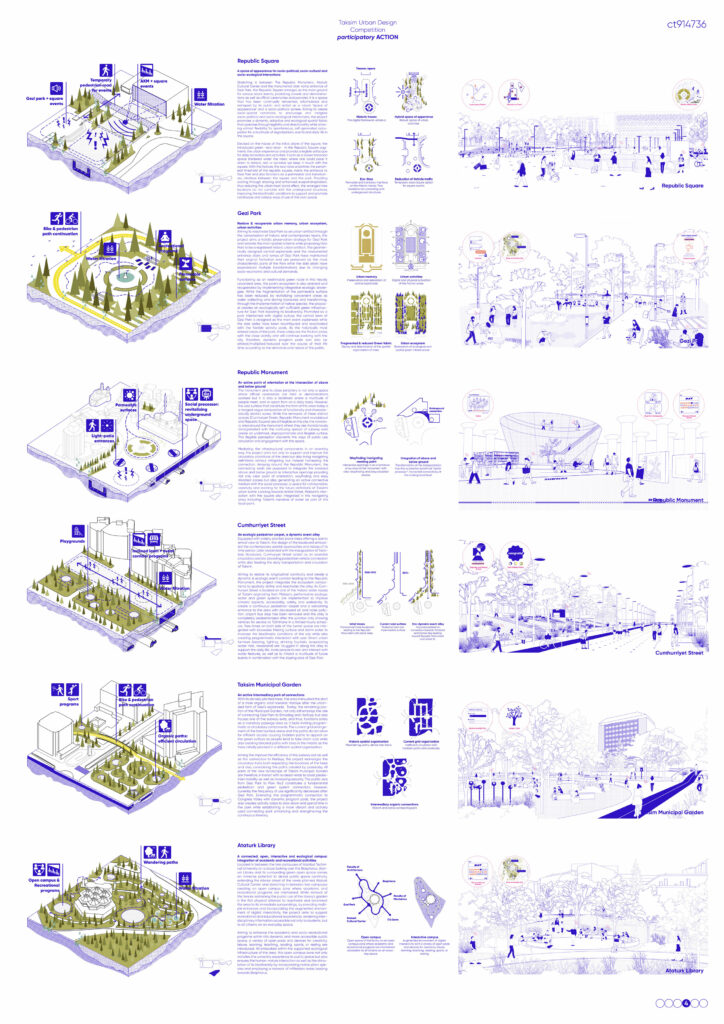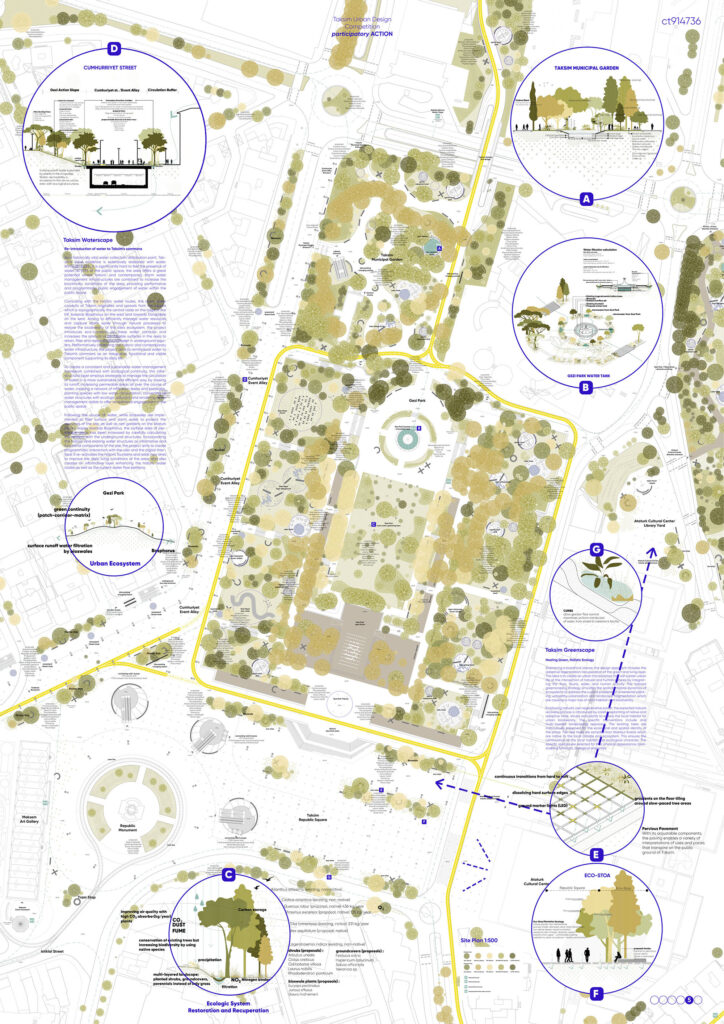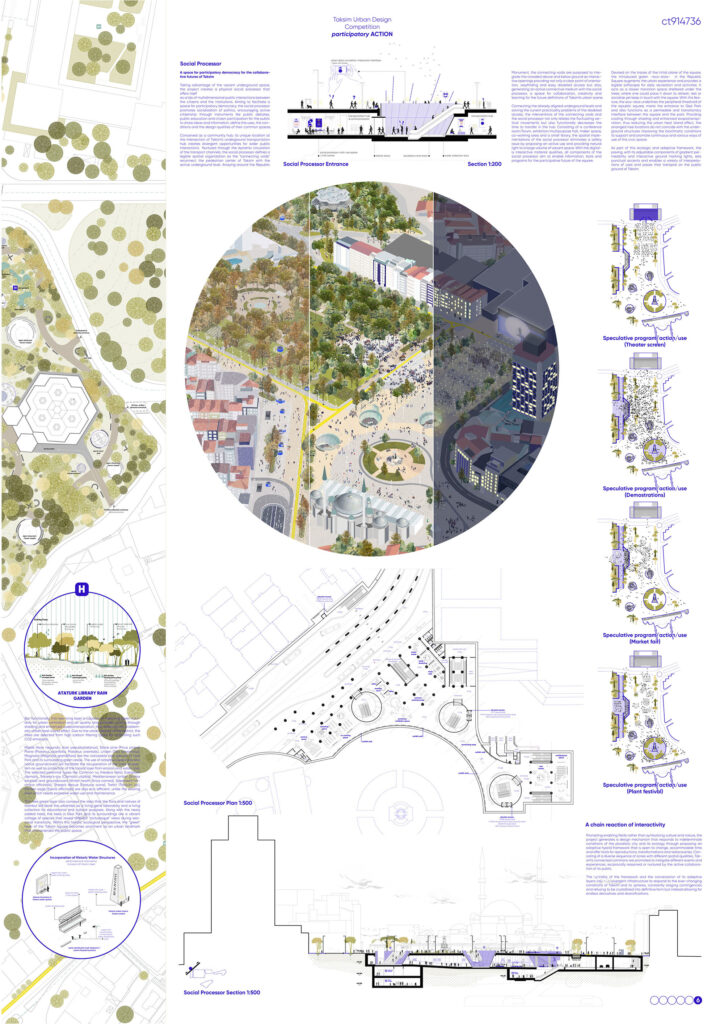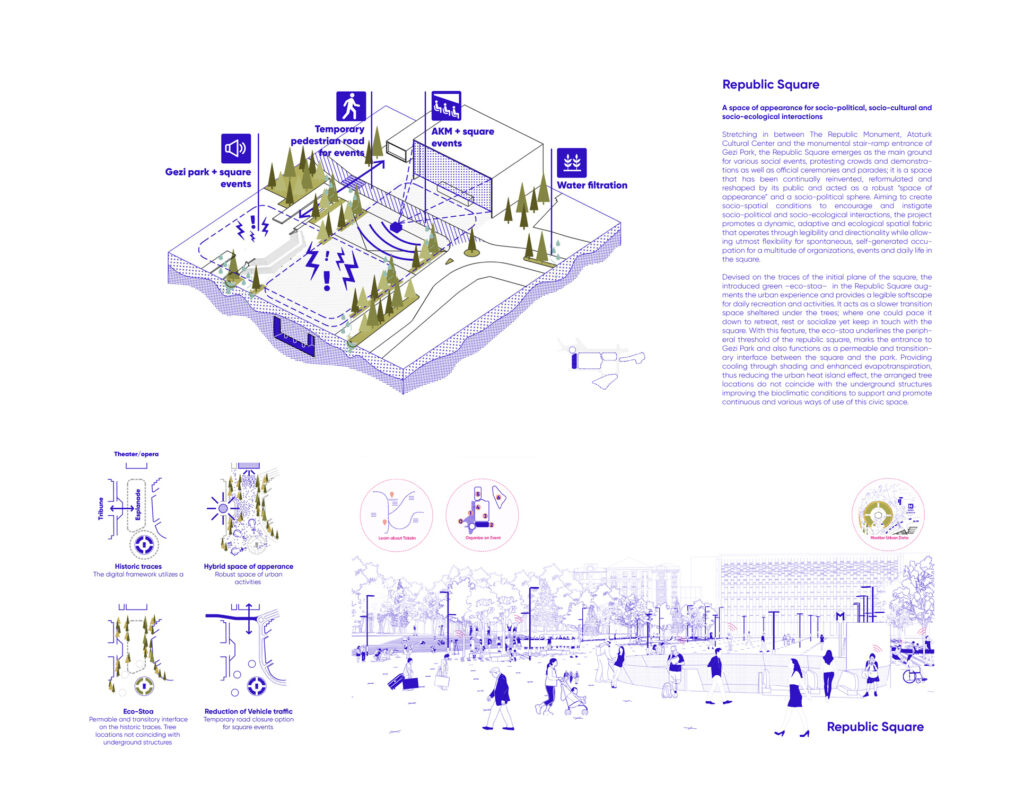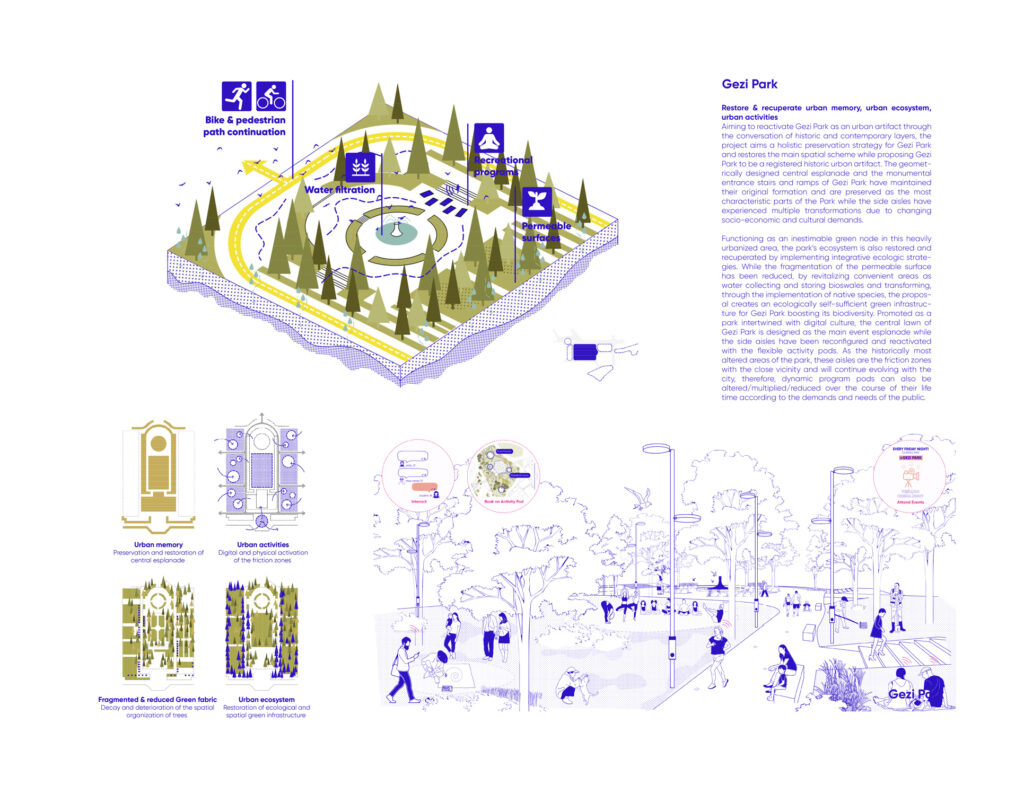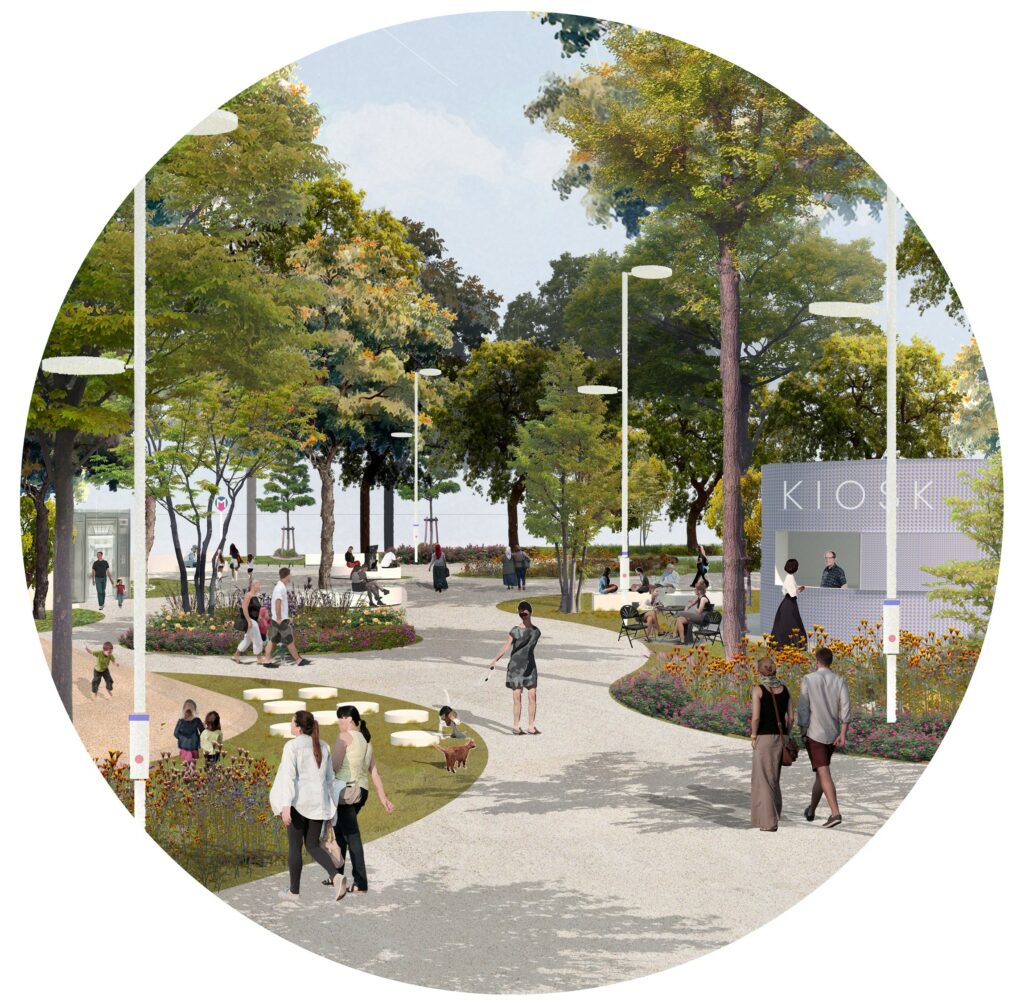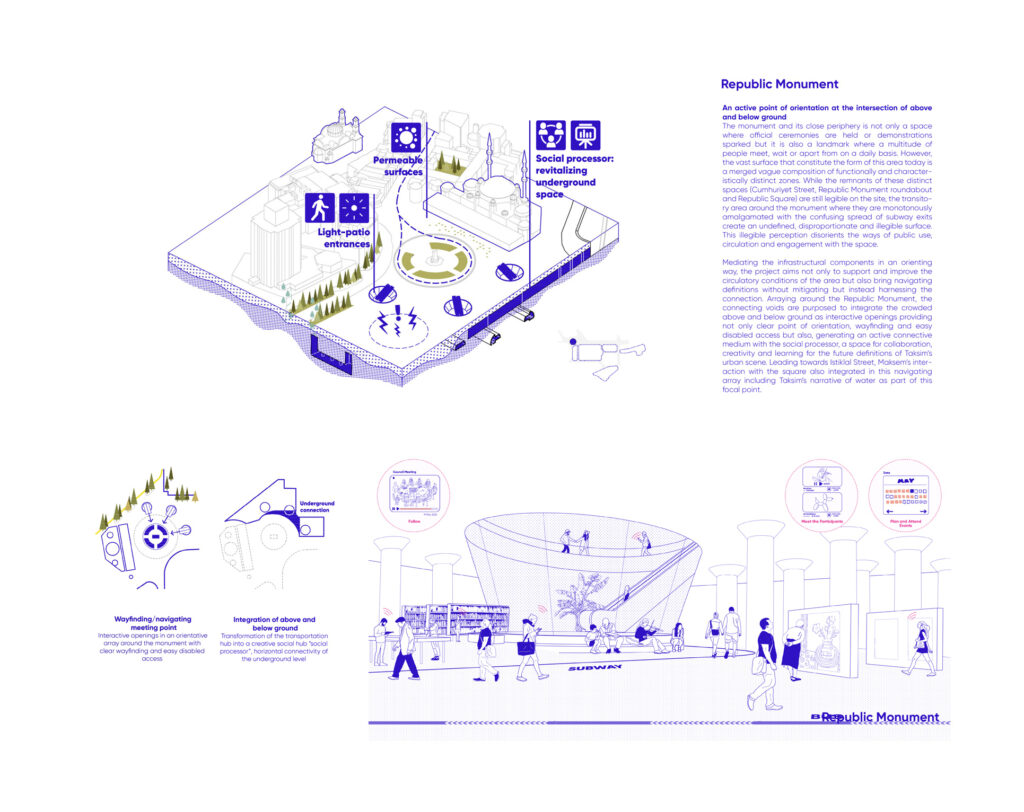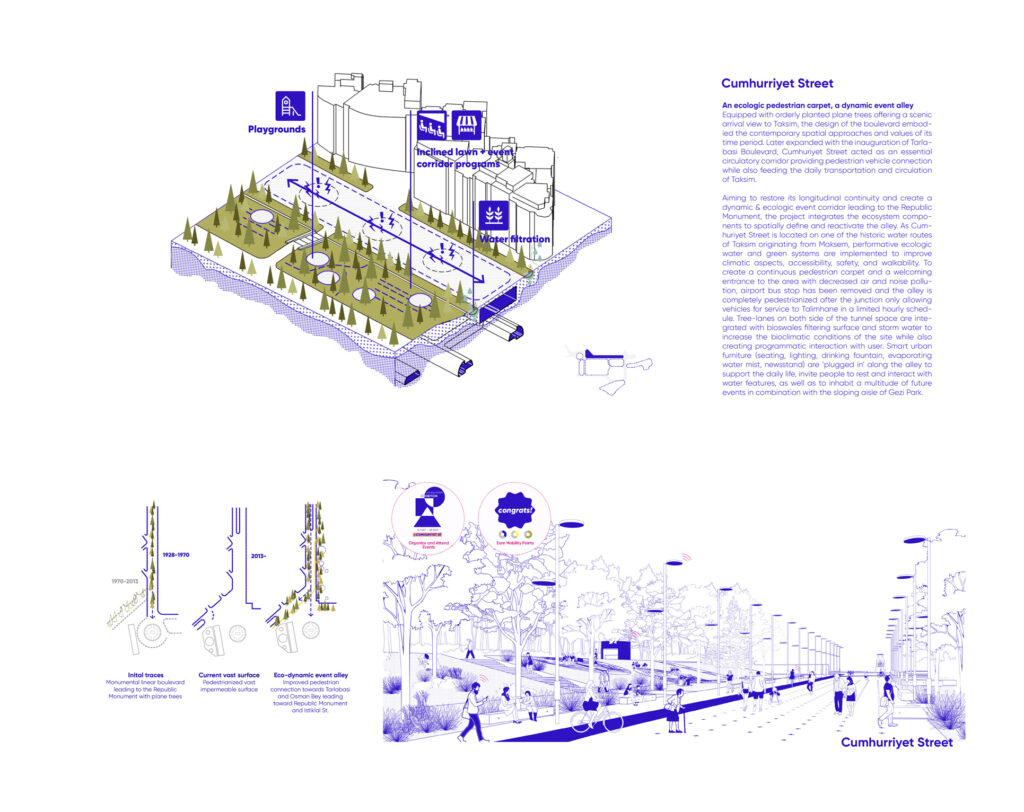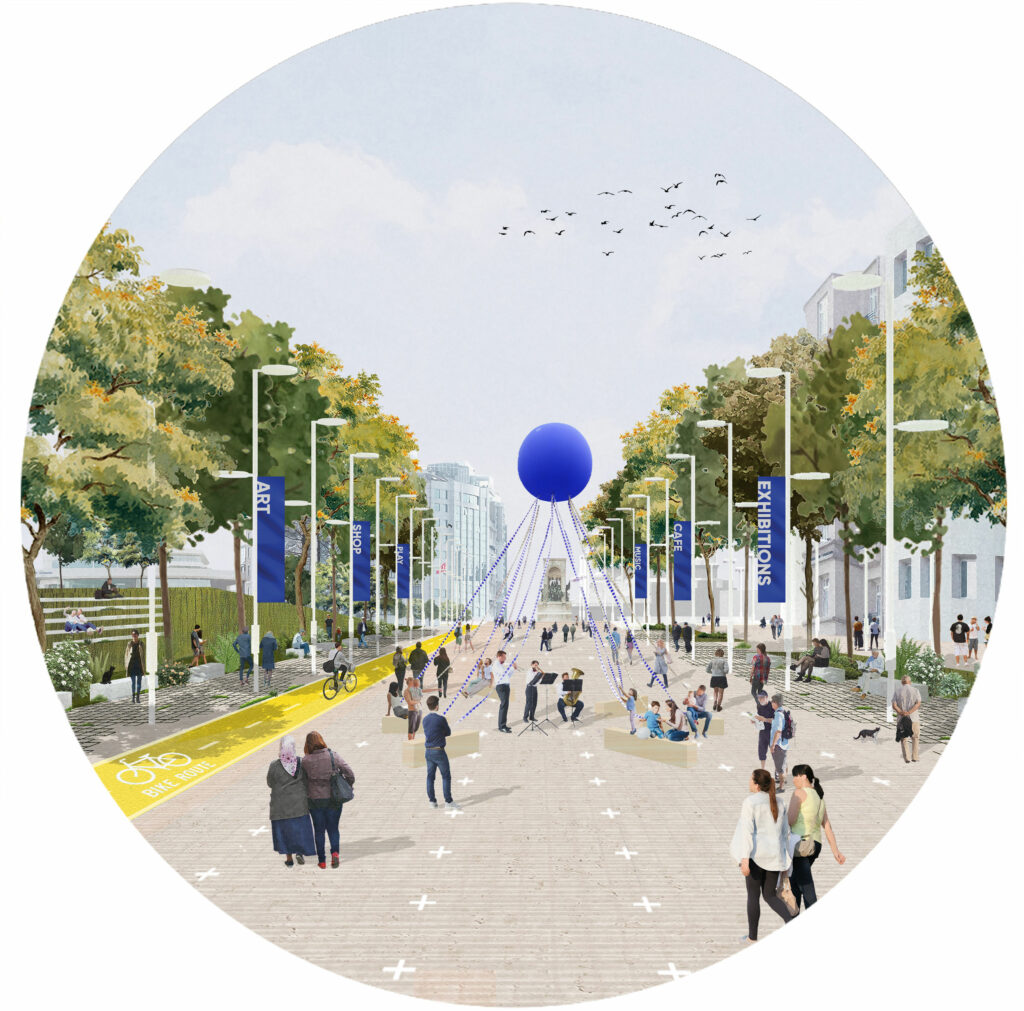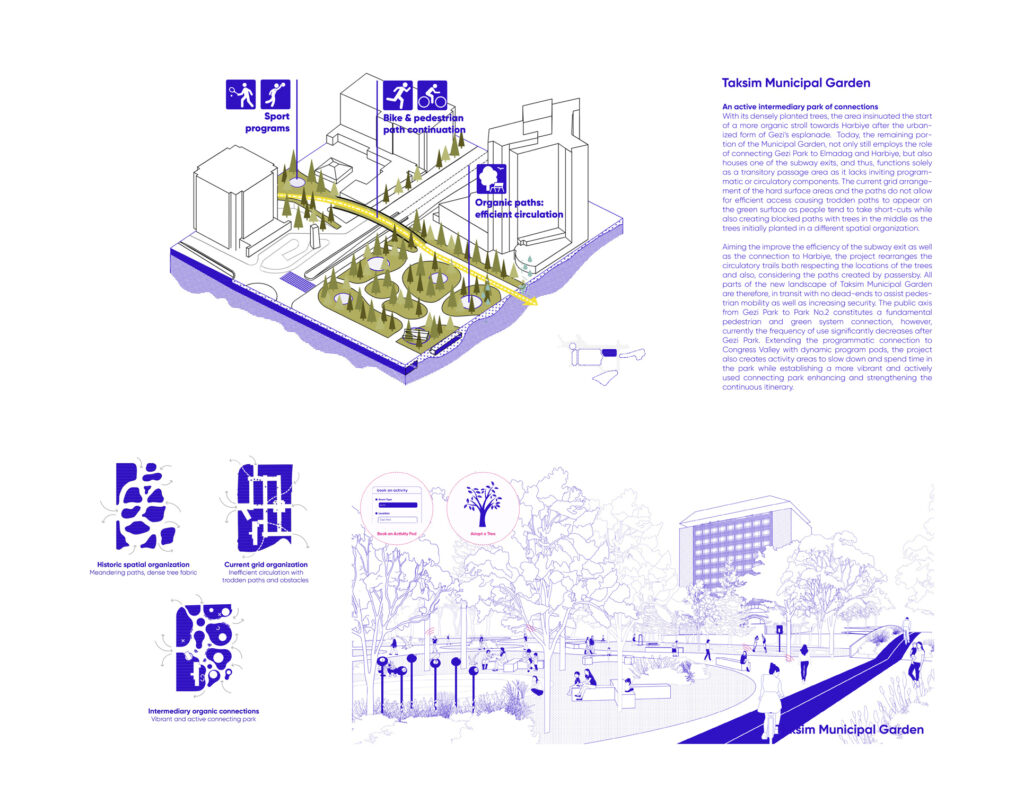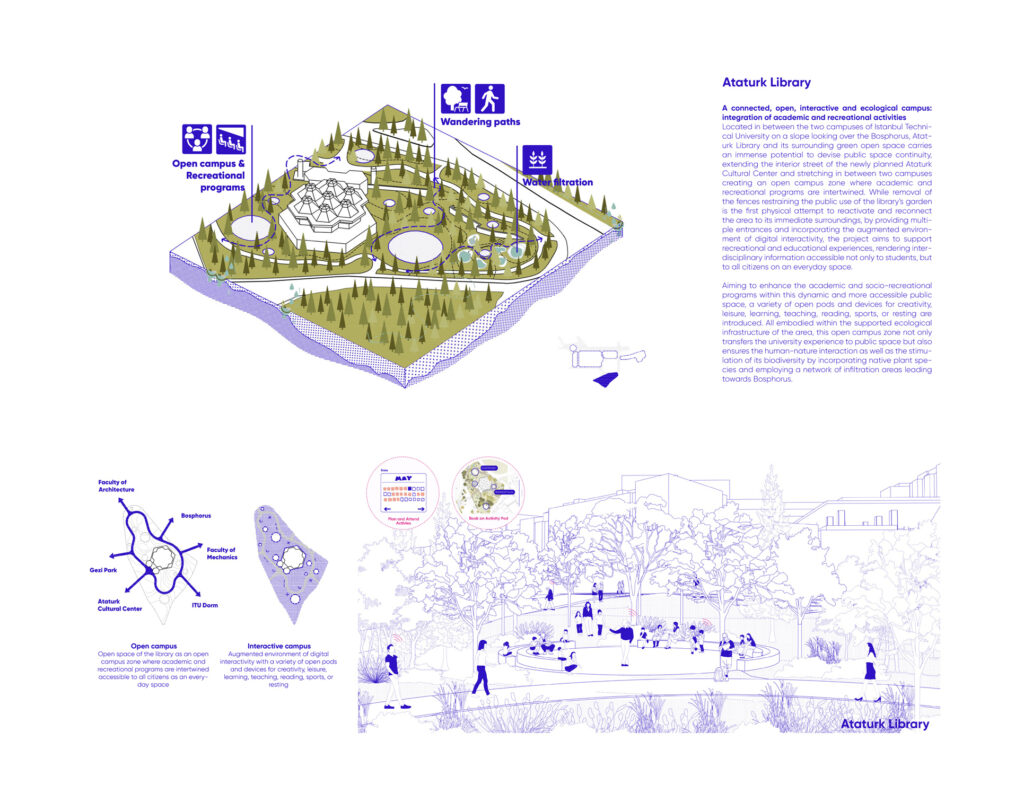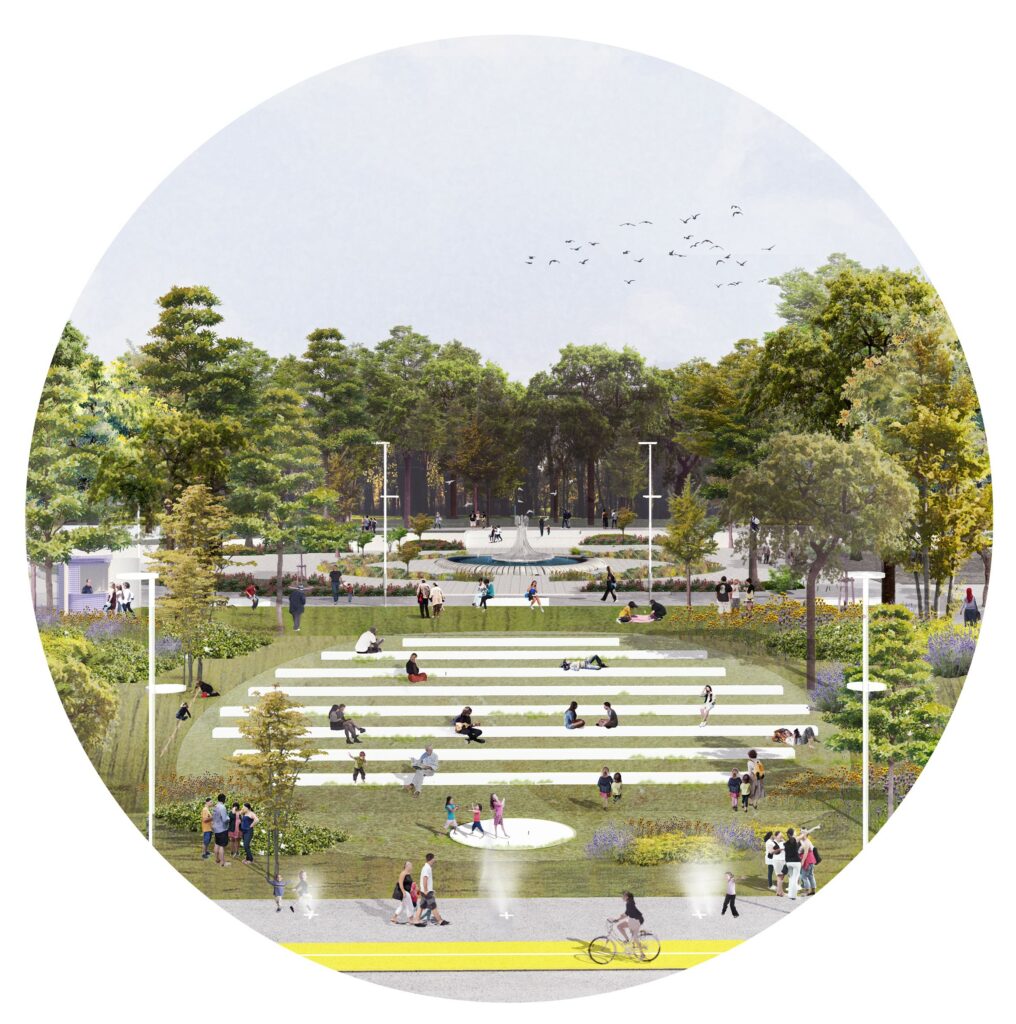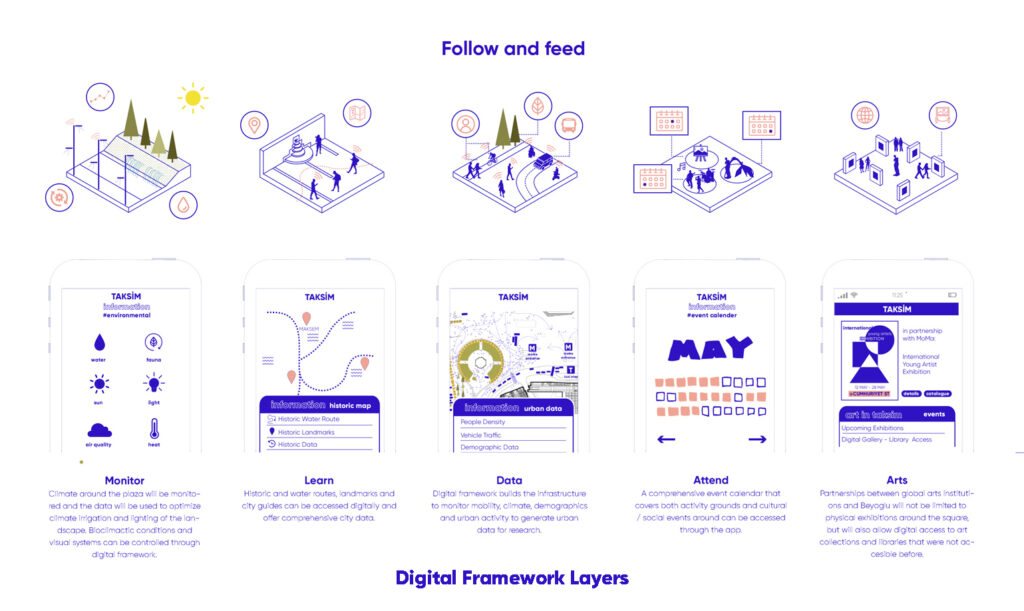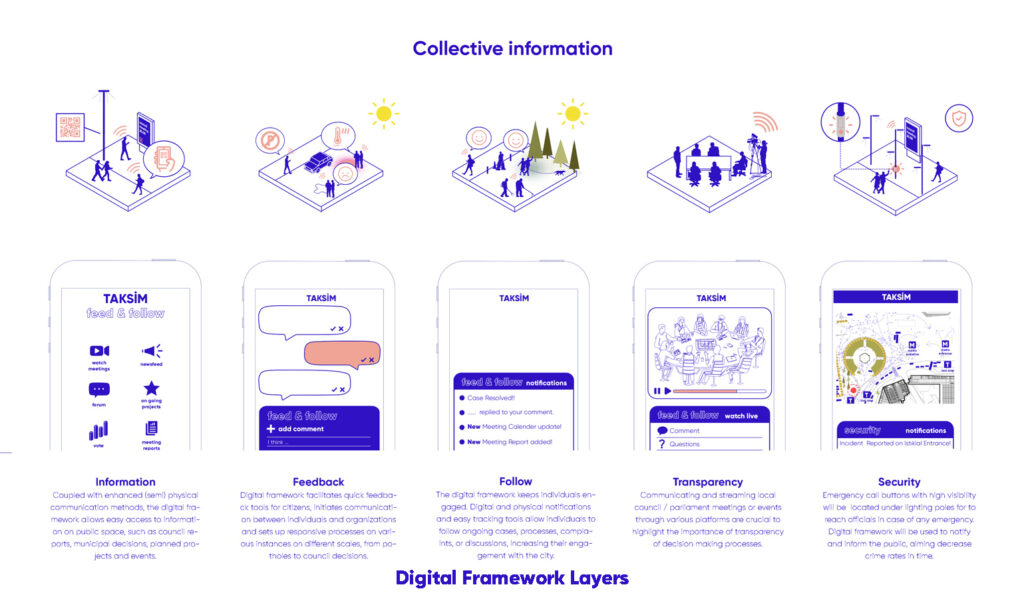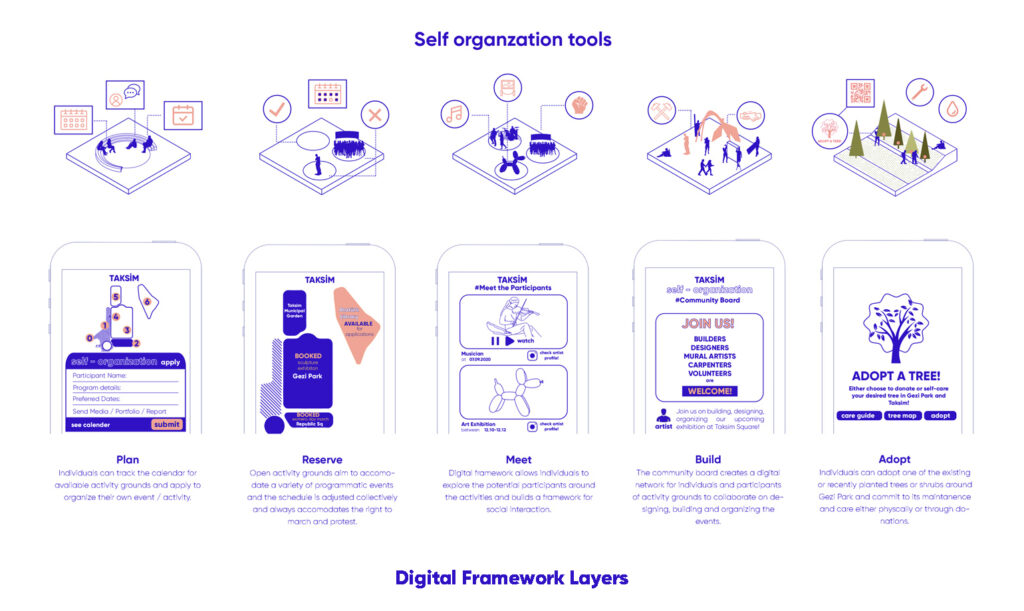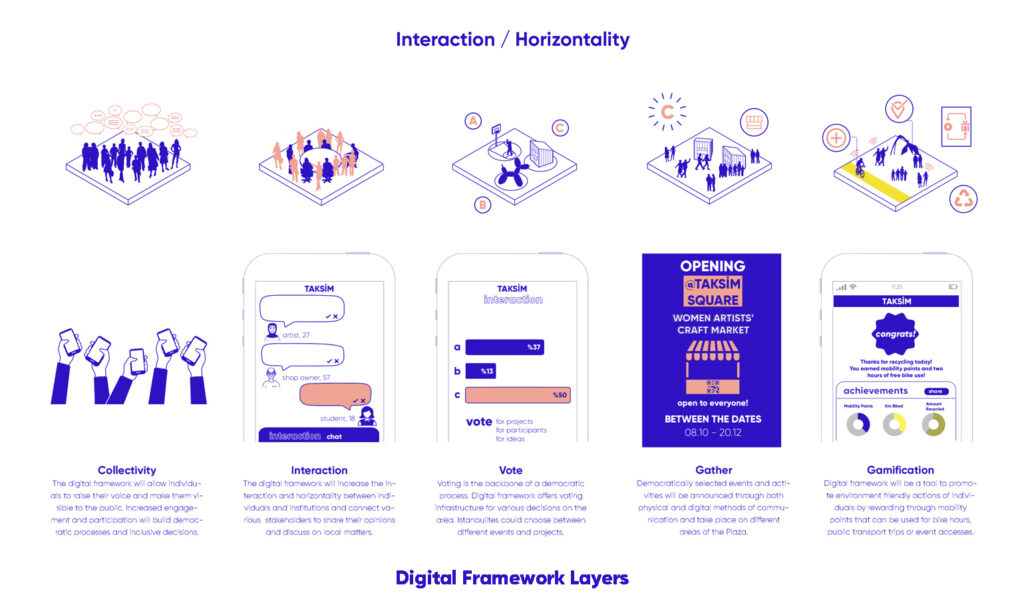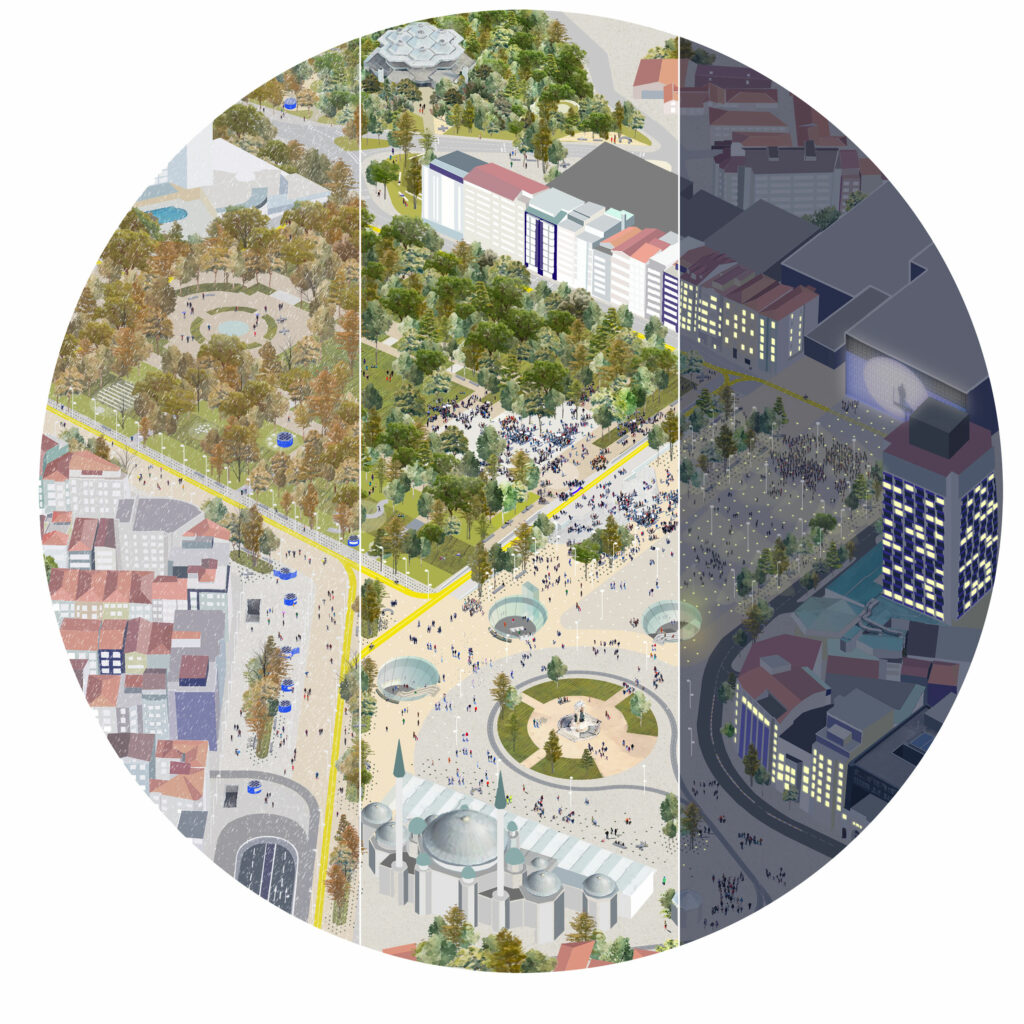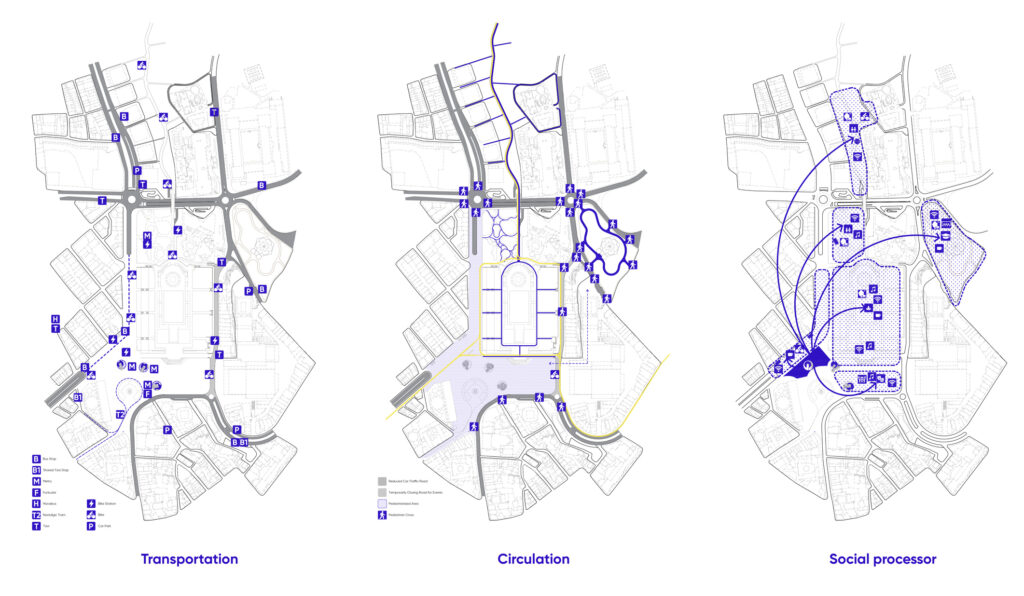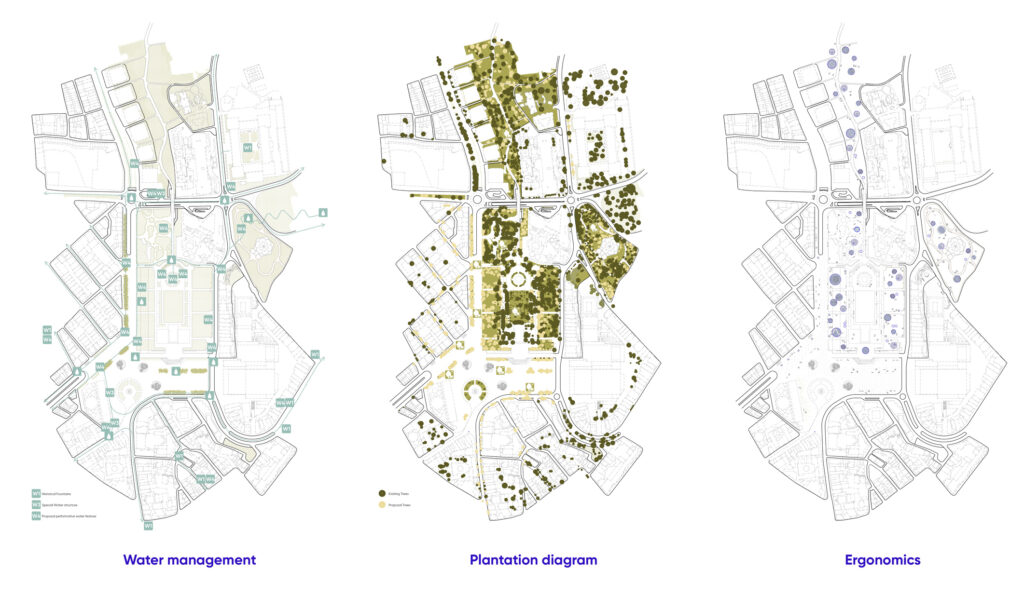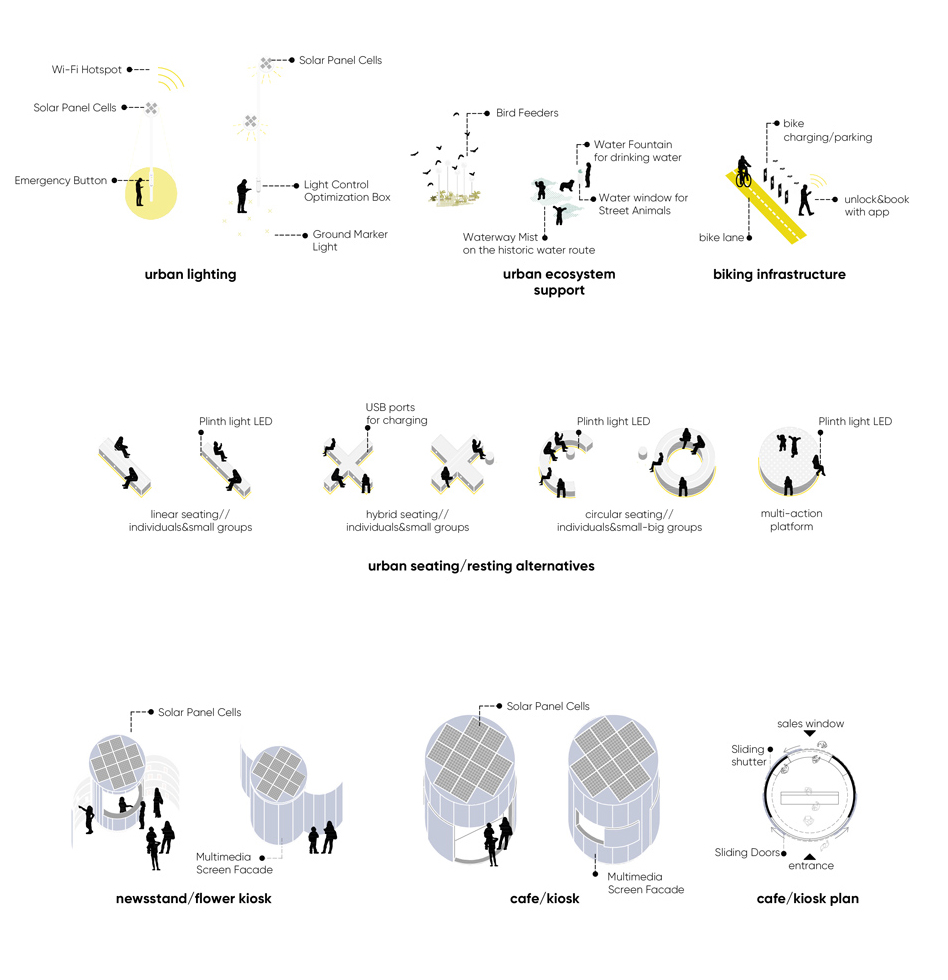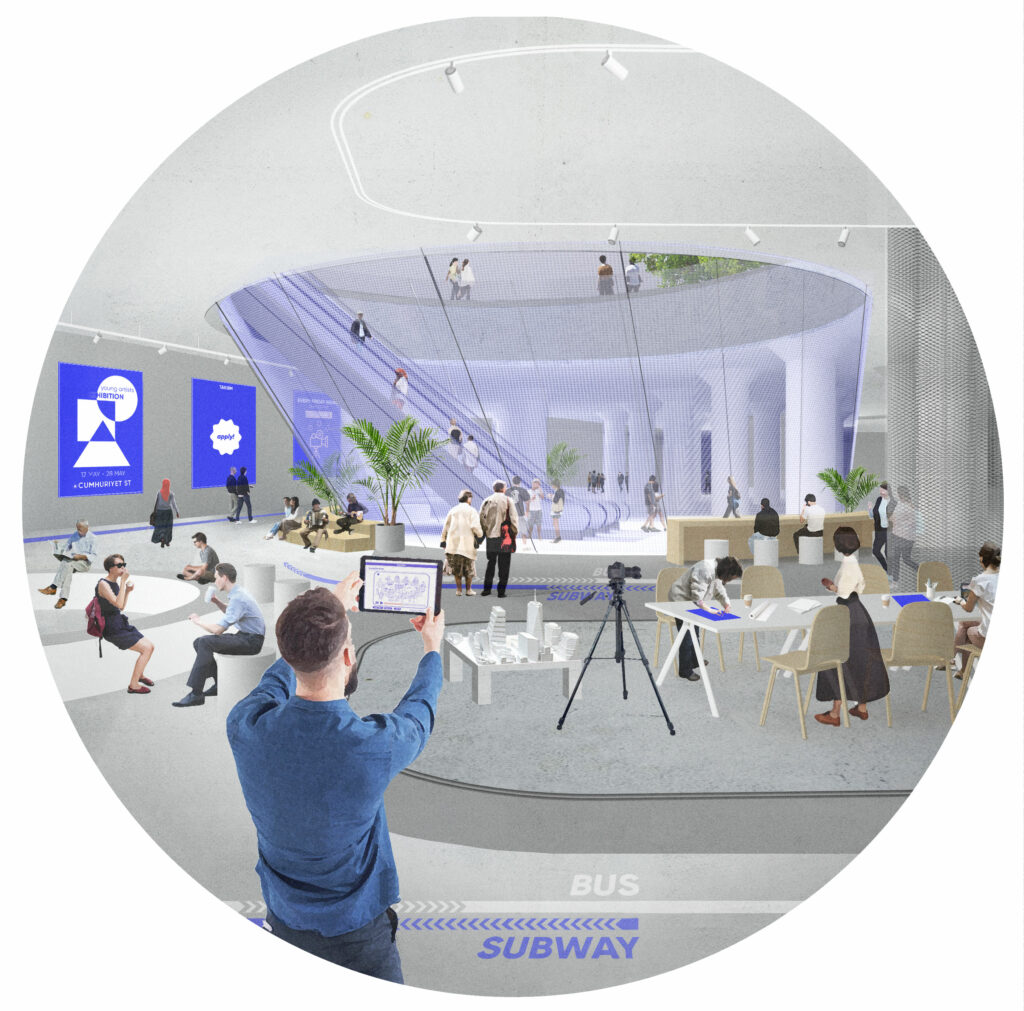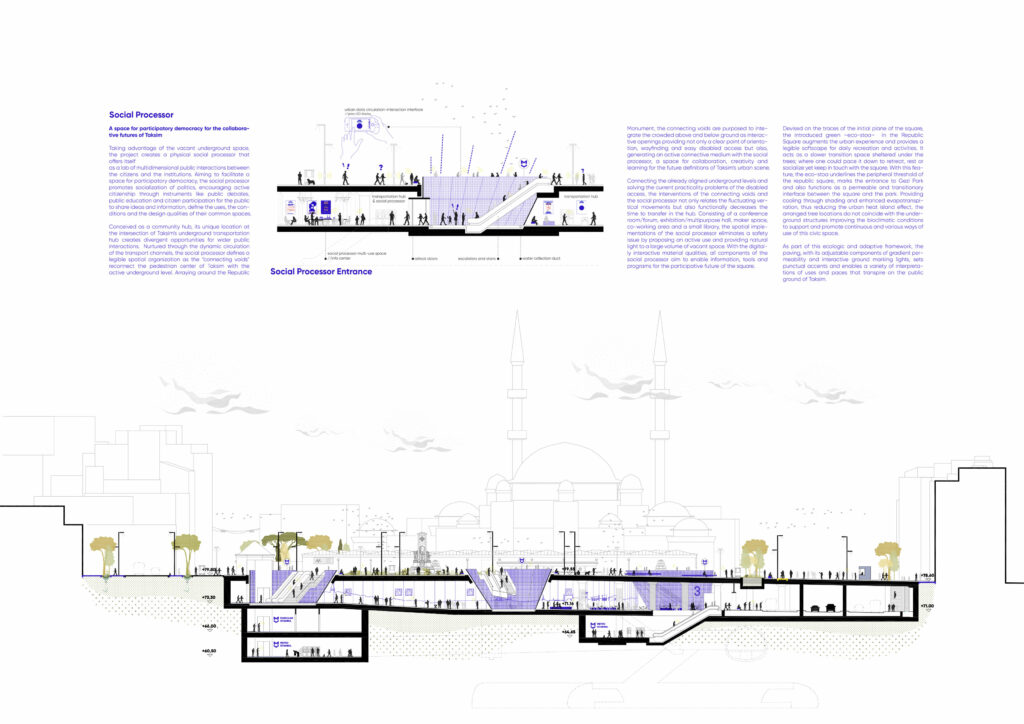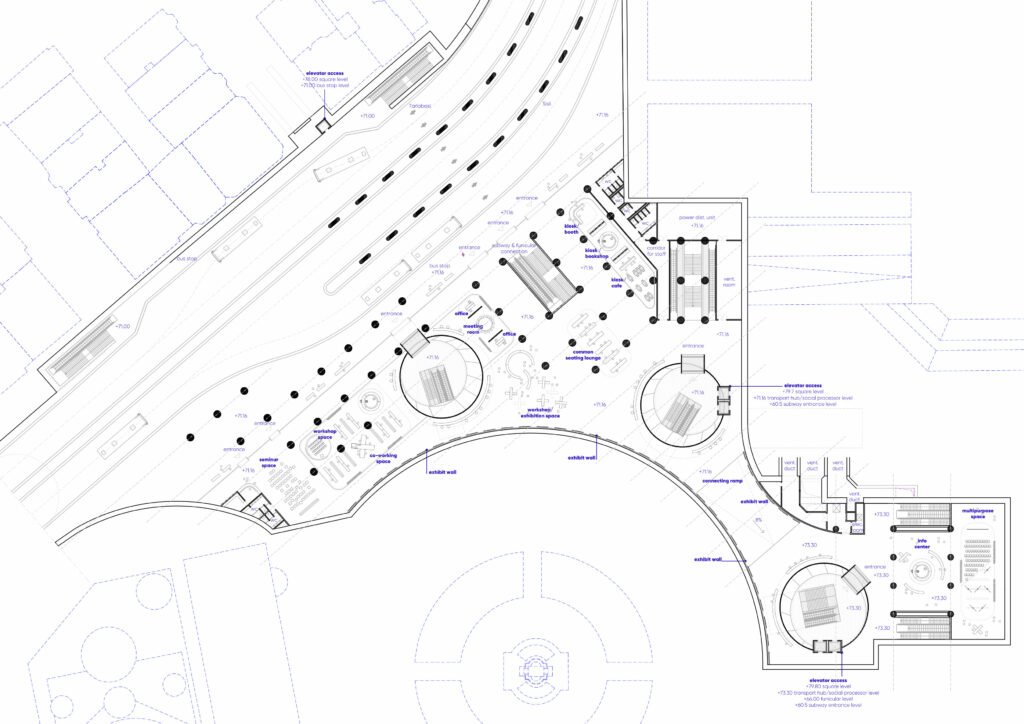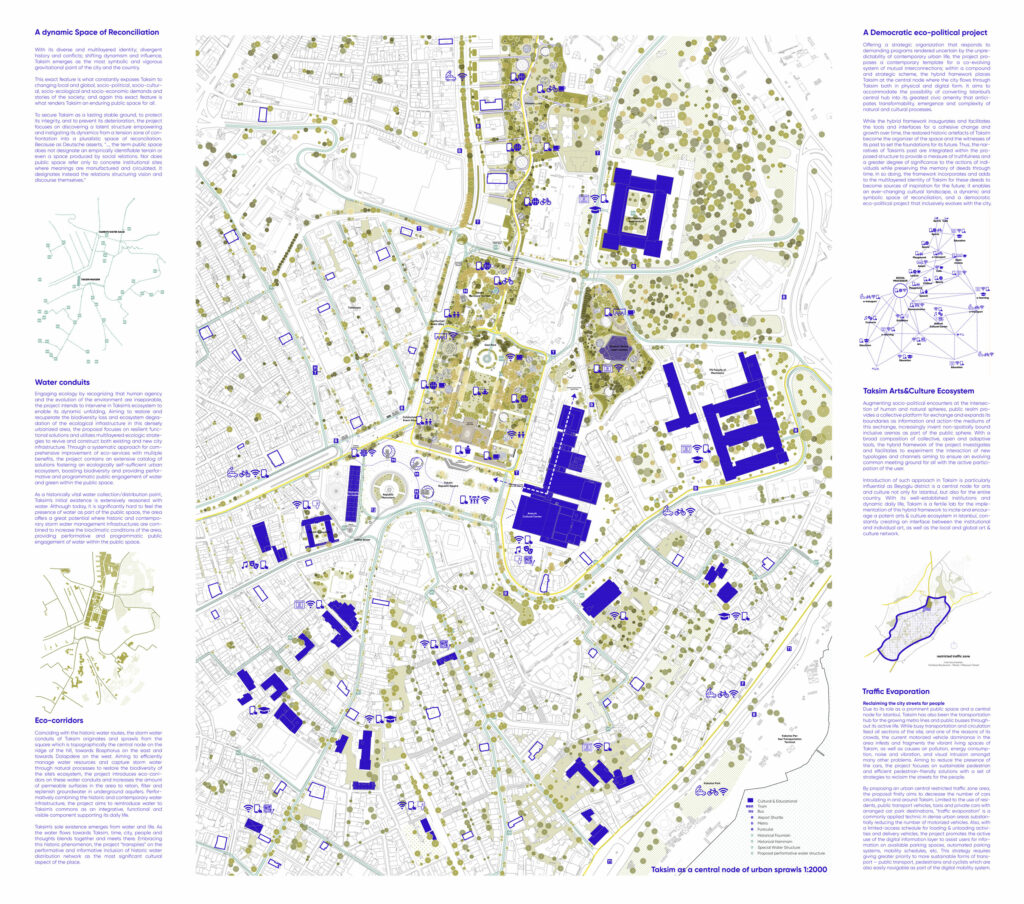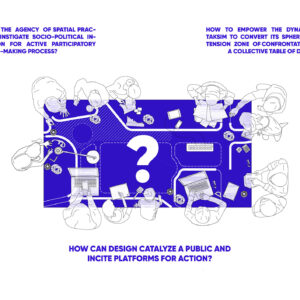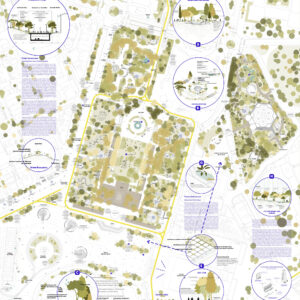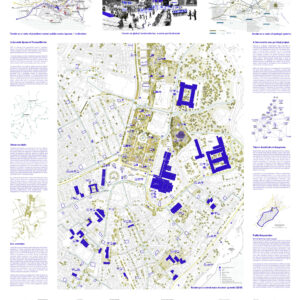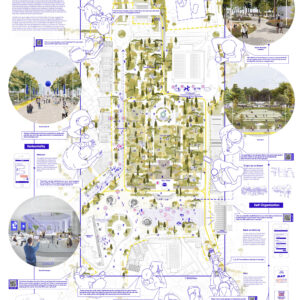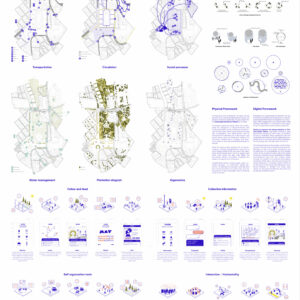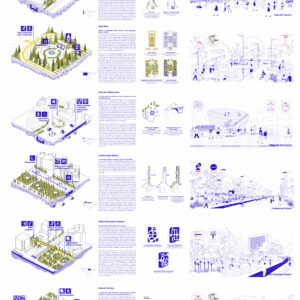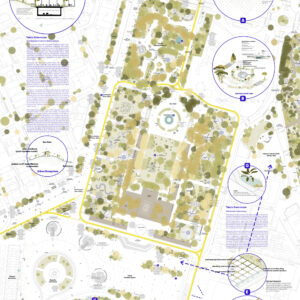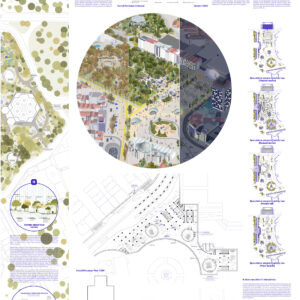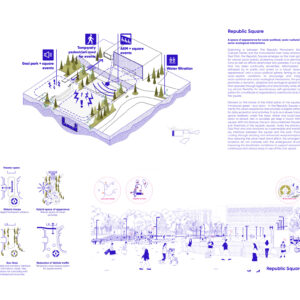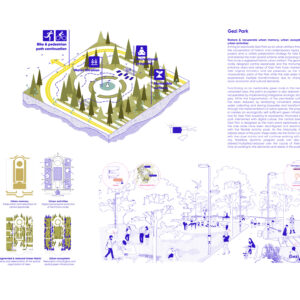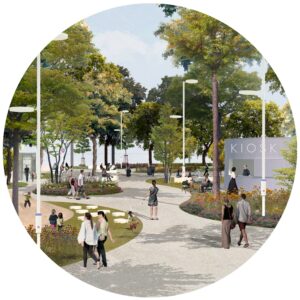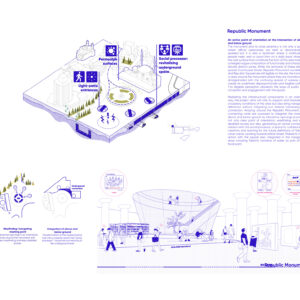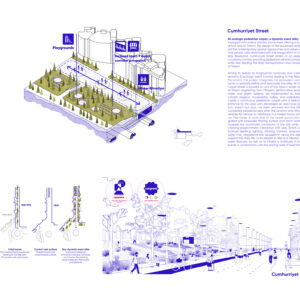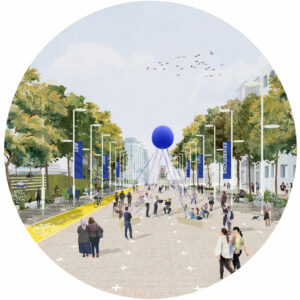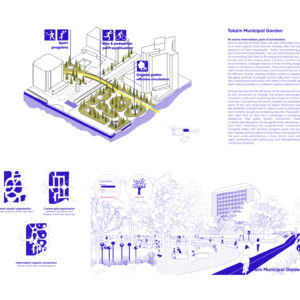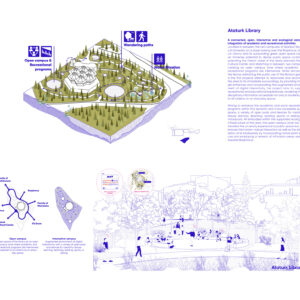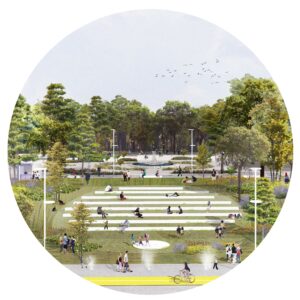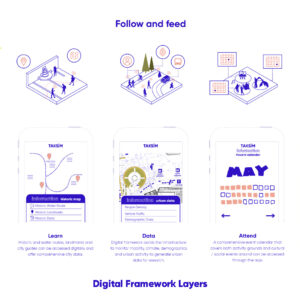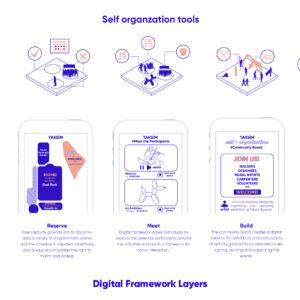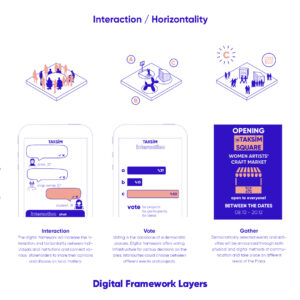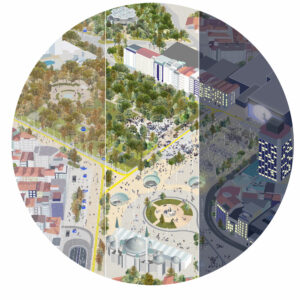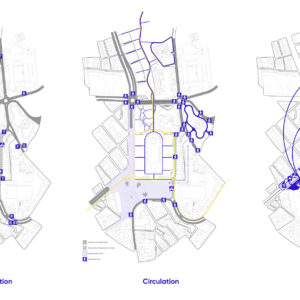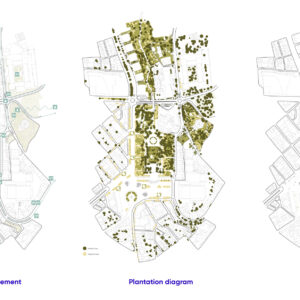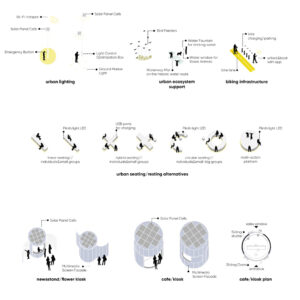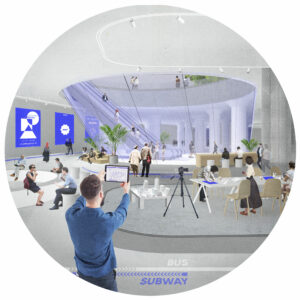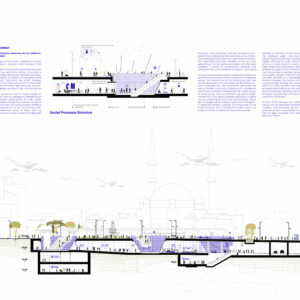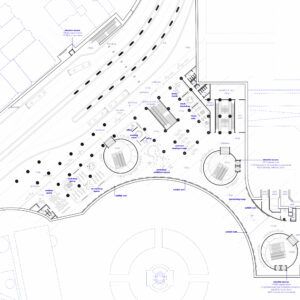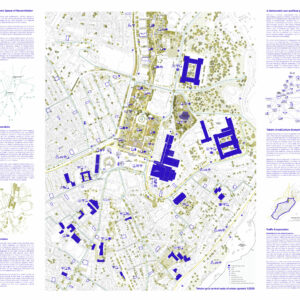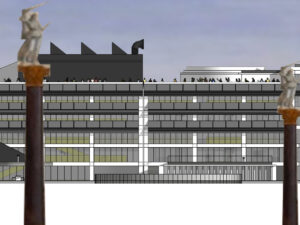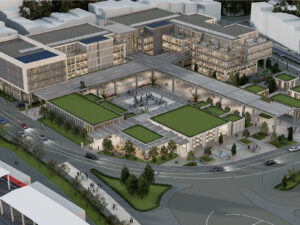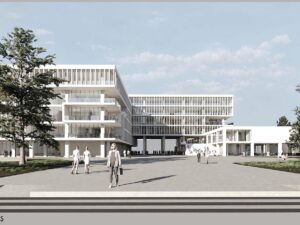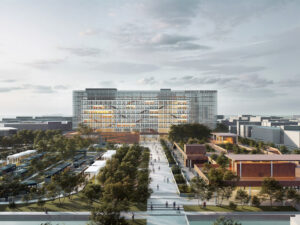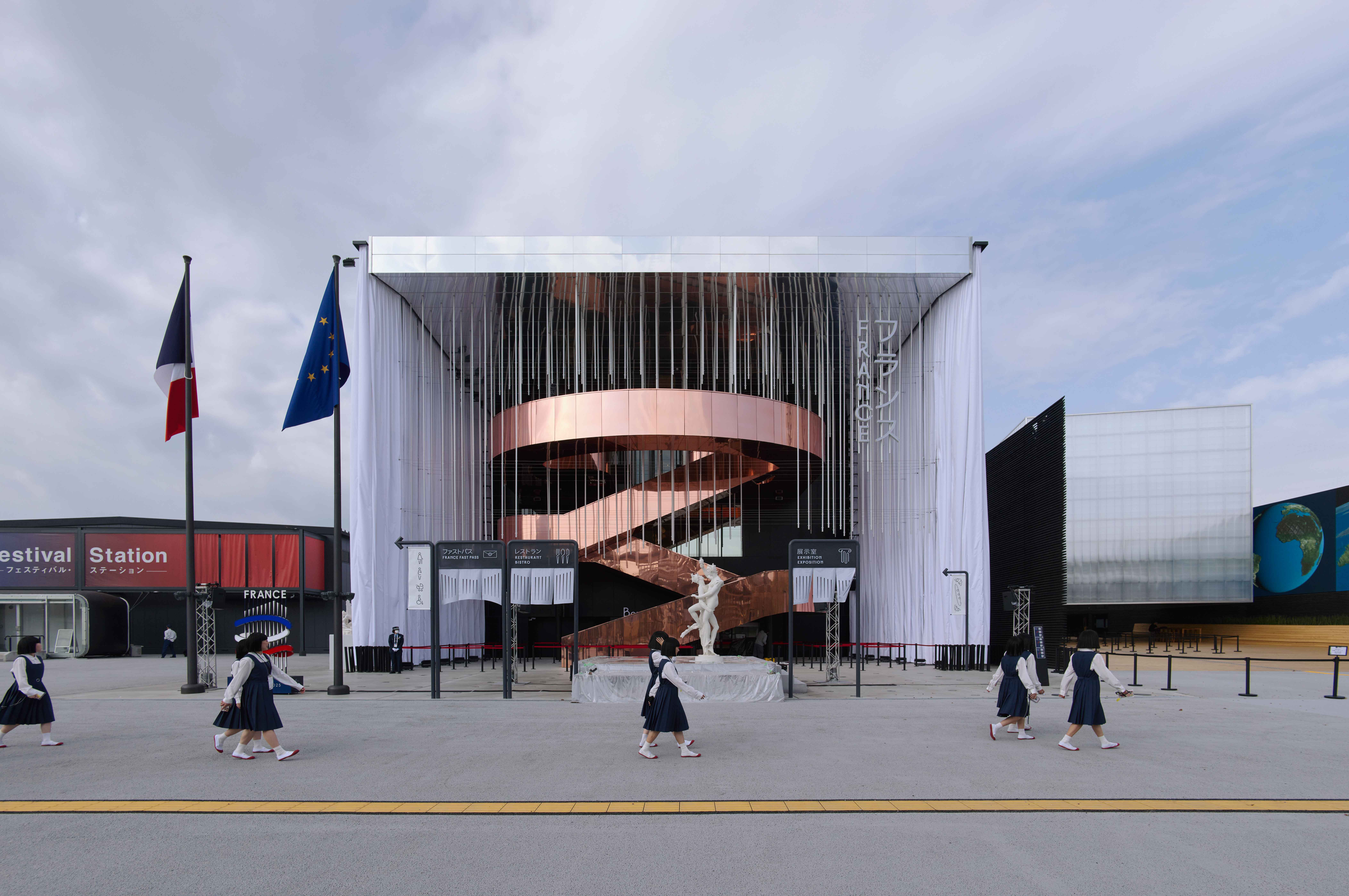- 24 Eylül 2020
- 11128 defa okundu.
Eşdeğer Mansiyon, Taksim Kentsel Tasarım Yarışması
PROJE RAPORU
“Participatory ACTION”
Keywords: democratic, interactive, crowd-sourced, scripted, indeterminate, subversive, reactive, networked, defiant, adhocratic, transparent, resistant, temporary, performative
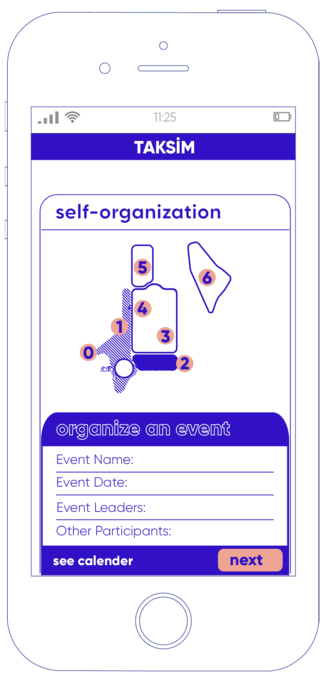
Participatory Action for Taksim-reading/interpretation and position
Oscillating between the local and global, socio-political and socio-ecological as well as the permanent and ephemeral, Taksim is the most symbolic square of the city and the country with its multilayered and diverse identity. Originating from a water collection/distribution point, Taksim has perpetually been reconfigured and reinvented from a peripheral green into the principal urban center; from a state ceremony arena into a gathering/strolling esplanade; from the core of arts &culture into a commercial transportation hub; and from a stage of power demonstration into a square of democratic speech. With this continual and mutual evolution, Taksim is a space of constant transformation yet of outstanding permanence, connecting those simultaneously to their ancestors and successors, thus creating the basis for Arendt’s memorable “common world” of public life:
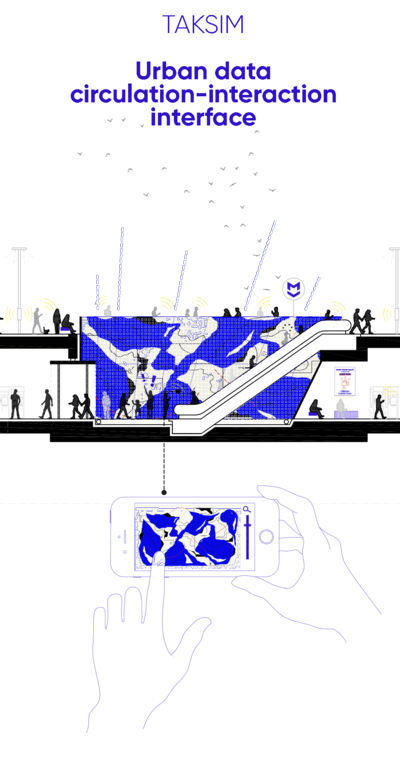
“The common world transcends our lifespan into past and future alike; it was there before we came and will outlast our brief sojourn in it. It is what we have in common not only with those who live with us, but also with those who were here before and with those who will come after us.”
It is this strong dynamism of Taksim – with its human artifacts and institutions – to endure through time and become the common heritage of successive generations. Such sphere of “public-ness” transpires and transcends the ephemerality of those who inhabit it; it constitutes a lasting/stable ground that allows for human remembrance and anticipation both as cumulative memory and as a measure of trust in the future.
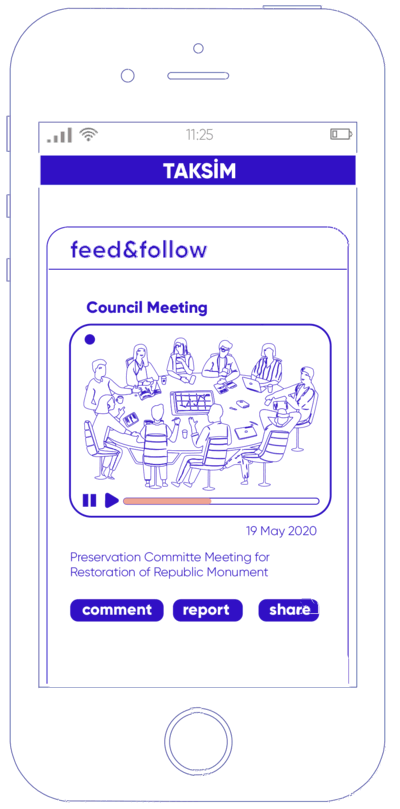
This unique gravity of Taksim, hence renders the area as the utmost tense and critical space of conflict–a tension zone in the midst of opposing poles and their monuments: shrines of state socialism vs. pillars of neoliberalism; modernist western nation state ideologies vs. orientalist reminiscent of the past; consumerist tourism activities vs. cultural and educational institutes; democratic expression vs. autocratic surveillance; nature vs. urban; car vs. pedestrian; soft vs. hard; … To this end, their dual confrontational stance resembles a chess game where the sole aim is to achieve a checkmate by removing the opponent’s captured pieces. Conflict is an inevitable component of democracy, however, is it possible to channel its energy for negotiation and reconciliation? Subsequently, is it possible to empower the dynamics of Taksim to convert its public sphere from a tension zone of confrontation into a collective table of dialogue?
21st century has sparked a paradigm shift of public to publics, prompting the repositioning of the role and performance of public space to operate within the contemporary urban complexities and their increasingly dynamic transformations.
This particular iconic public space proved its potential to serve as an example of a new experience that can distance itself from the top-down manipulations and conflicts of the past, and rather create a vision of change towards a participatory future. Parallel to global tendencies and conjunctures of our young century, during Gezi Park events, the determined functions and rhetoric of public space were tested beyond their allocated formal perception; a new city was established with its tents, library, food dispensing units, infirmary, performance stage, discussion podiums and speaker’s corner. By its very nature, it was a spontaneous ephemeral city created from the bottom-up.
This period also showed how technology can be used to improve and change our democracy; how physical and digital space are more effective when used as mediators that do not contradict but reciprocally foster one another. This transforming production and social communication provided a glimpse at the currently reinvented fabric of our socio-spatial environment.
The aim of this quest is to search the ways spatial design can facilitate socio-political engagement in public space and elicit conversations between the individual, the collective and the institution; as well as to augment socio-ecological encounters at the intersection of the human and natural spheres.
Democratic right to city is not merely about protest in Taksim, nor its participatory process can be limited to objections to already approved decisions during the official public display periods. It is about creating the socio-spatial conditions to enable socio-political and socio-ecological interactions, and therefore, promoting systems of negotiation and reconciliation that are responsive, adaptable, non-linear and multivalent.

Yet, what is the agency of spatial practice to instigate socio-political interaction for active participatory decision-making process? And, how can design catalyze a public to incite responsive platforms of social, ecological and political action?
At the intersection of increasingly pluralistic, unpredictable, contingent and broad networks, Taksim emerges as a multilayered node expanding the context and climate of the project while testing the role and relevancy of the spatial professions in the quest of fostering socio-politically inclusive and socio-ecologically motivated design. This positioning of the networked participatory design replaces the logics of the industrial age, where the creative one designed for the non-creative masses; instead, it promotes the designer as “the facilitator” who enables a design mechanism – a framework of interactive tools for the divergent conditions of the urban field.
This strategy deploys tactics to collaborate with the indeterminacy of the contemporary city or society alongside the ecology by introducing a flexible and unified framework that is to be intervened by human activities or natural flows to absorb the ever-changing configurations.
In the light of such understanding of the designer as the facilitator; the project aims the creation of enabling fields instead of stable configurations; it focuses on accommodating processes that refuse to be crystallized into definitive form; discovering the manipulations of an open collective framework for endless intensifications, diversifications, and redistributions.
Fabricating resilience – to allow and adapt user/ecologic manipulation– is perhaps the only way for spatial practice to gain agency in the design of Taksim’s public sphere that is increasingly divergent, crisis-ridden, contradictory, and formed by the complex negotiation of politics, economics, culture and the environment amongst others. By seeking symbiosis and feedback between natural and human as well as physical and digital spheres, we can reframe Taksim as a democratic eco-political project that inclusively evolves with the city.

If the individual’s feedback is the democratic alternative for continuous change and evolution of the space, why a legible framework of plurality as a design mechanism is still required in Taksim?
Pluralism is typically understood as meaning diverse, different or divergent, it is in fact much more complex and political in nature. As Arendt suggests, plurality is an expression of both the common public and distinct individuals; thus, posits the dialectic of our “distinct-equality” at the core of the discourse for public sphere.
Arendt’s characterization of this complex and seemingly contradictory public sphere is perhaps best summarized through her analogy of a group of people sitting around a table. For Arendt, the table is the common world – it simultaneously connects and bonds those around it while preventing them from falling over each other and assimilating belief systems. The disappearance of the table would leave strangers in an illegible space that lacked common bond – this would be the fall of the public realm and its associated reality and stability.
This reading of public sphere as a communal table defines the framework as a trigger mechanism that encourages the public and harness collectivity without suppressing individual expression or identity. Its legibility allows the individual to continually understand the ways of engaging with the space and thereby participate in the collective.
The disappearance of a collective framework is what threatens and deteriorates the dynamism of Taksim. As a merged composition of functionally and characteristically distinct zones, this amalgamated space offers a series of diverse fields that are adjacent to each other yet not working together. The spatial/legal/political/social illegibility renders Taksim as comprised of unrelated grounds, each piece locked into its own self-referential logic, each component unwilling to compromise for the sake of the common ground. This illegible perception confuses the ways of public use and discourages many forms of engagement with the space.
Thus, for this very reason an open and participatory framework at the intersection of the individual and the collective is needed; a dynamic, adaptive and reactive framework that operates through organization, legibility and directionality while allowing utmost flexibility for spontaneous, self-generated occupation.

“The process of reclamation” based on an adhocratic spatial approach
Response: A design mechanism – Coupling of Physical and Digital Framework
As a ‘process-driven’ design approach, the project probes instigating a new form of civic publicness through a hybrid framework that enables dynamic coexistence of socio-political/ecological/cultural/economic mutations. This framework constitutes a broad composition of collective, open and resilient tools promoting active contribution of the user and welcoming the impact of environmental conditions. Employing the coupling of physical and digital infrastructures to create this hybrid framework, the project aims to facilitate an active afterlife beyond the designers’ involvement in order to formulate the long-term viability of Taksim’s public sphere.
Infrastructure as a base condition for the formation of a city, engages the entire public without taking a particular stance. However, the definition of urban infrastructure in public space moves beyond the physically bound forms as digital expands its territory and its associated criticality for the public discourse. While their mutual interference creates a chain reaction of interactivity and information, the interdependent and intertwined harmony of the two emerges as the catalyst of the common ground generating the tools for public to continually reinvent, reformulate and reshape the public sphere.
